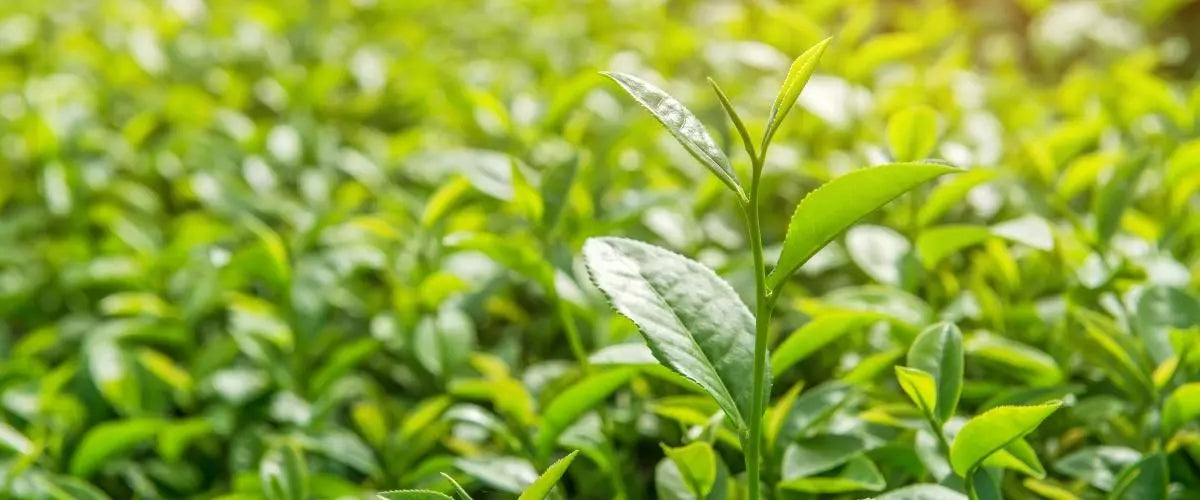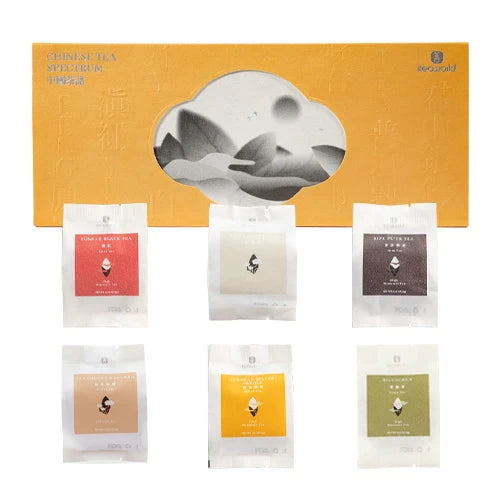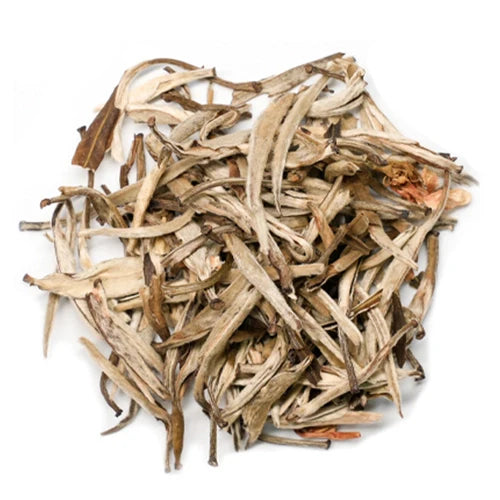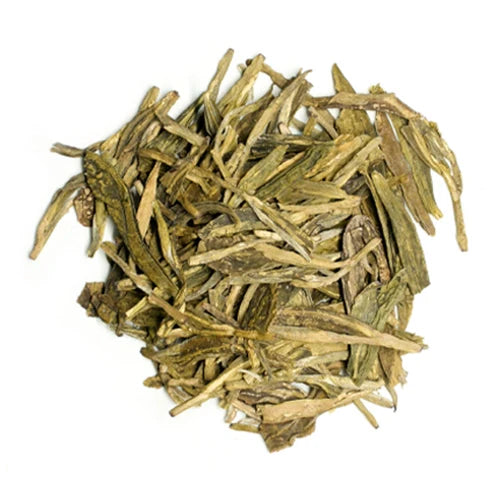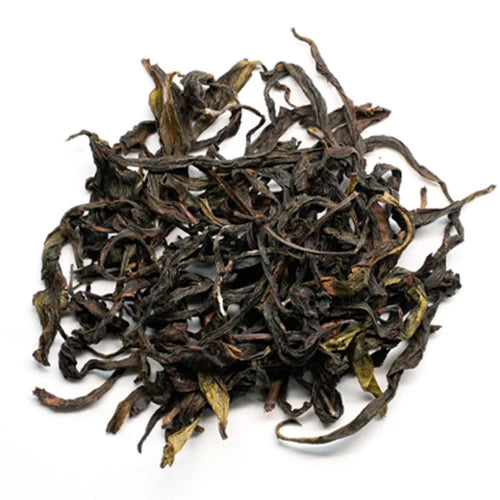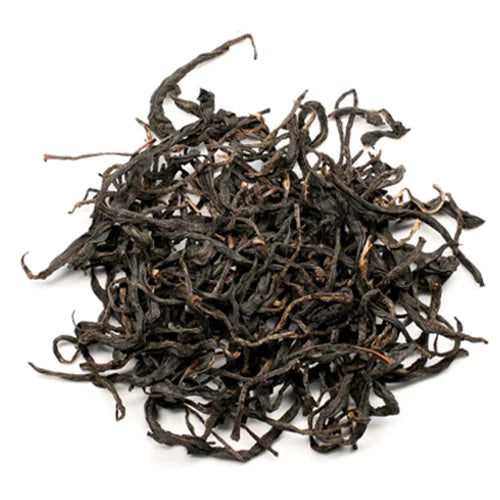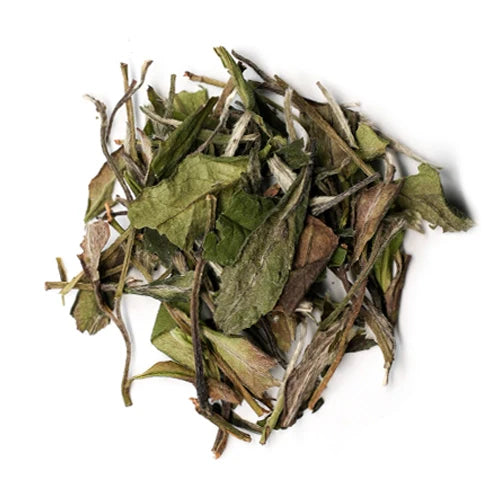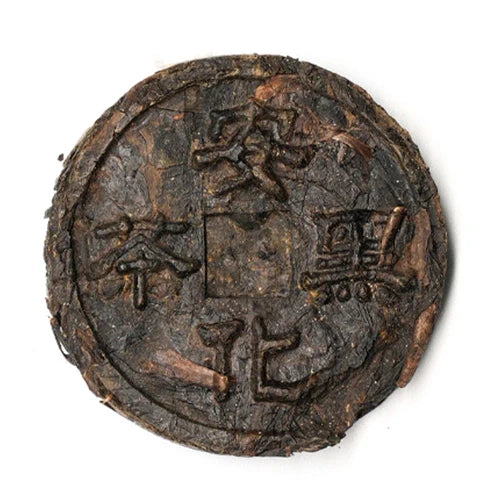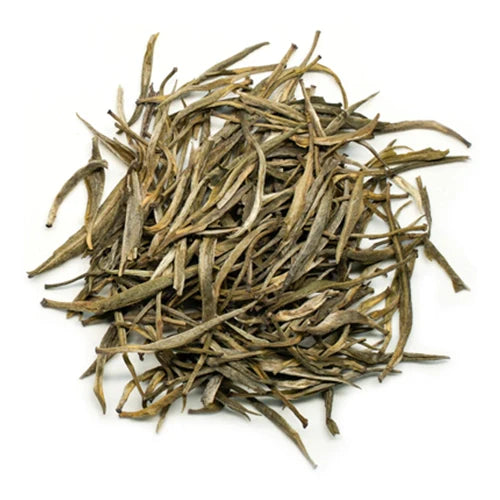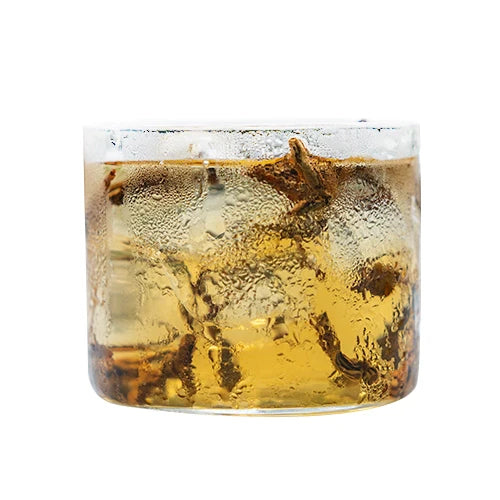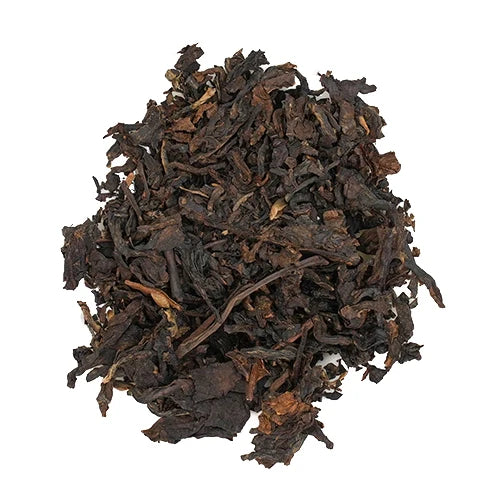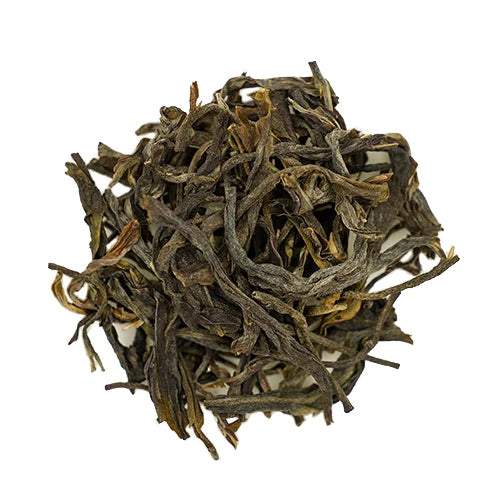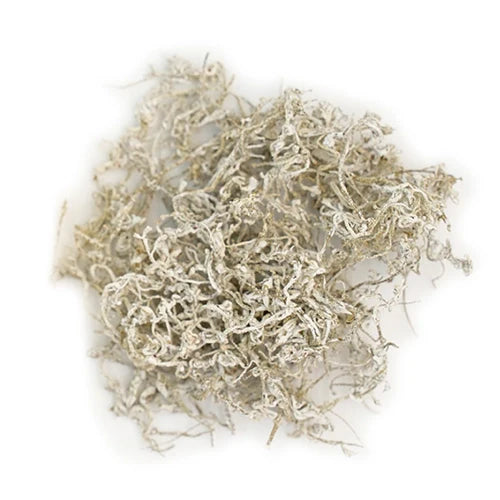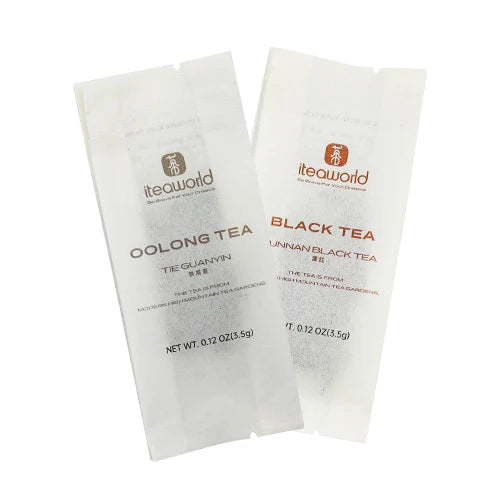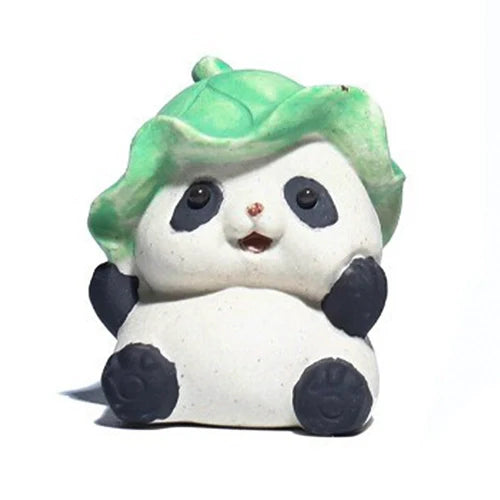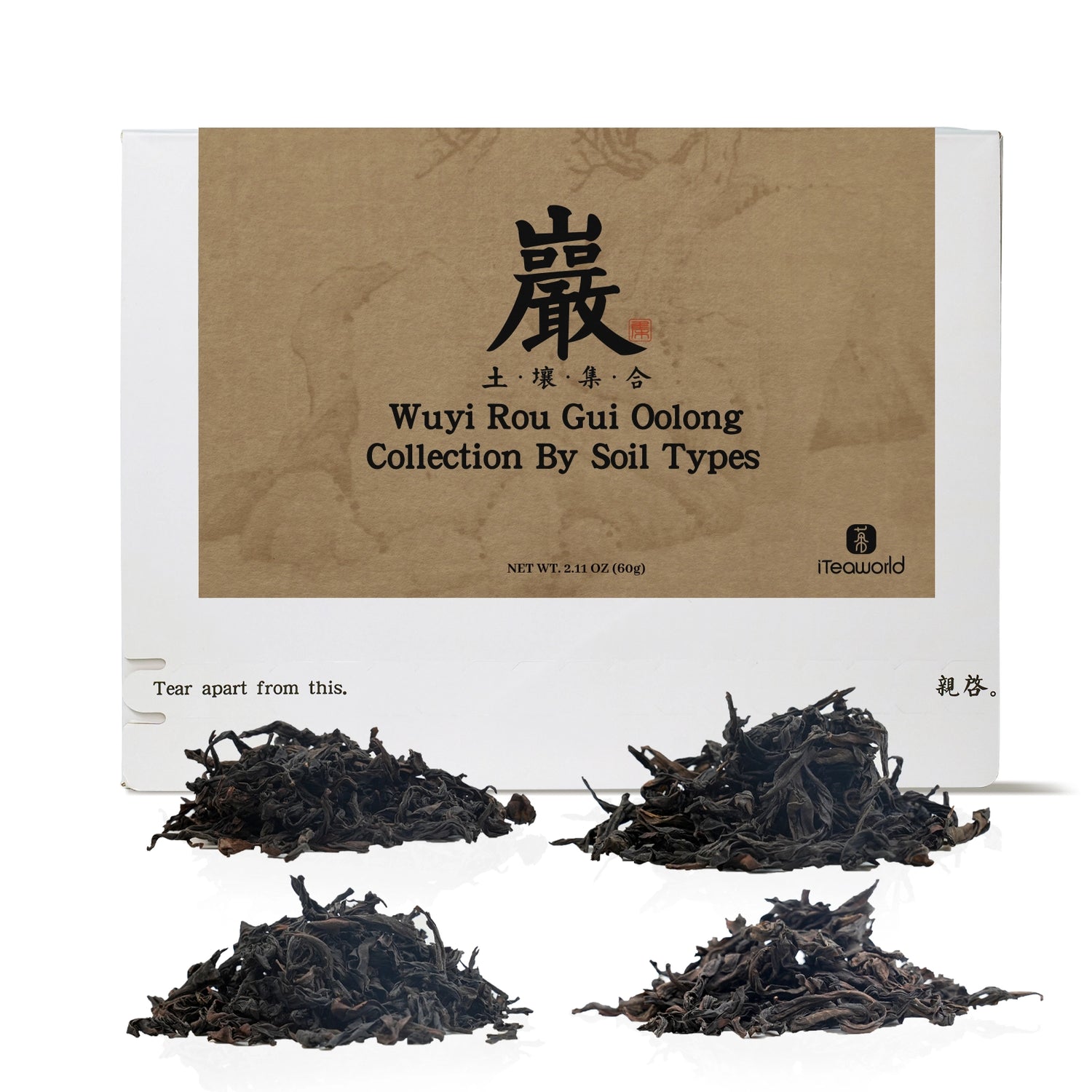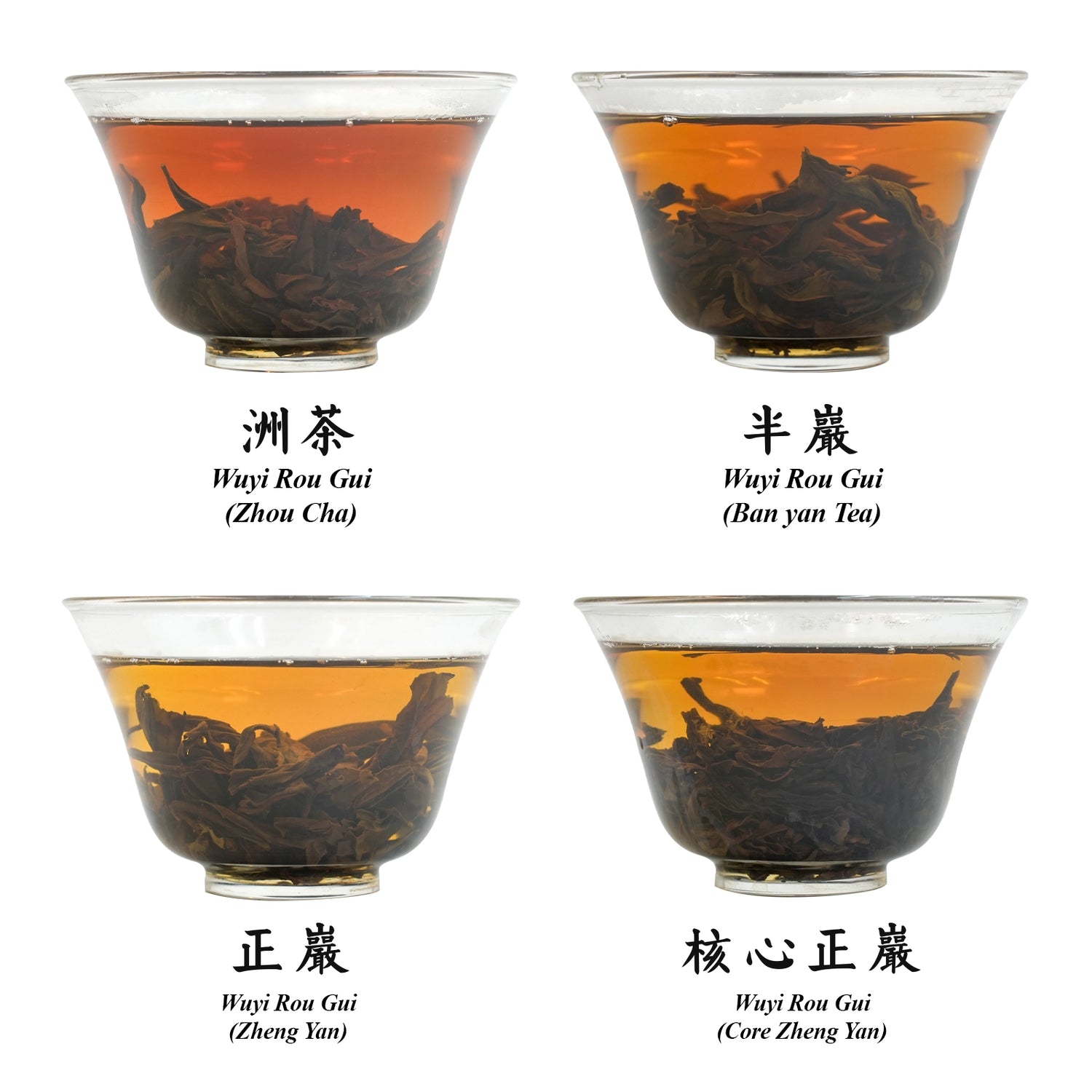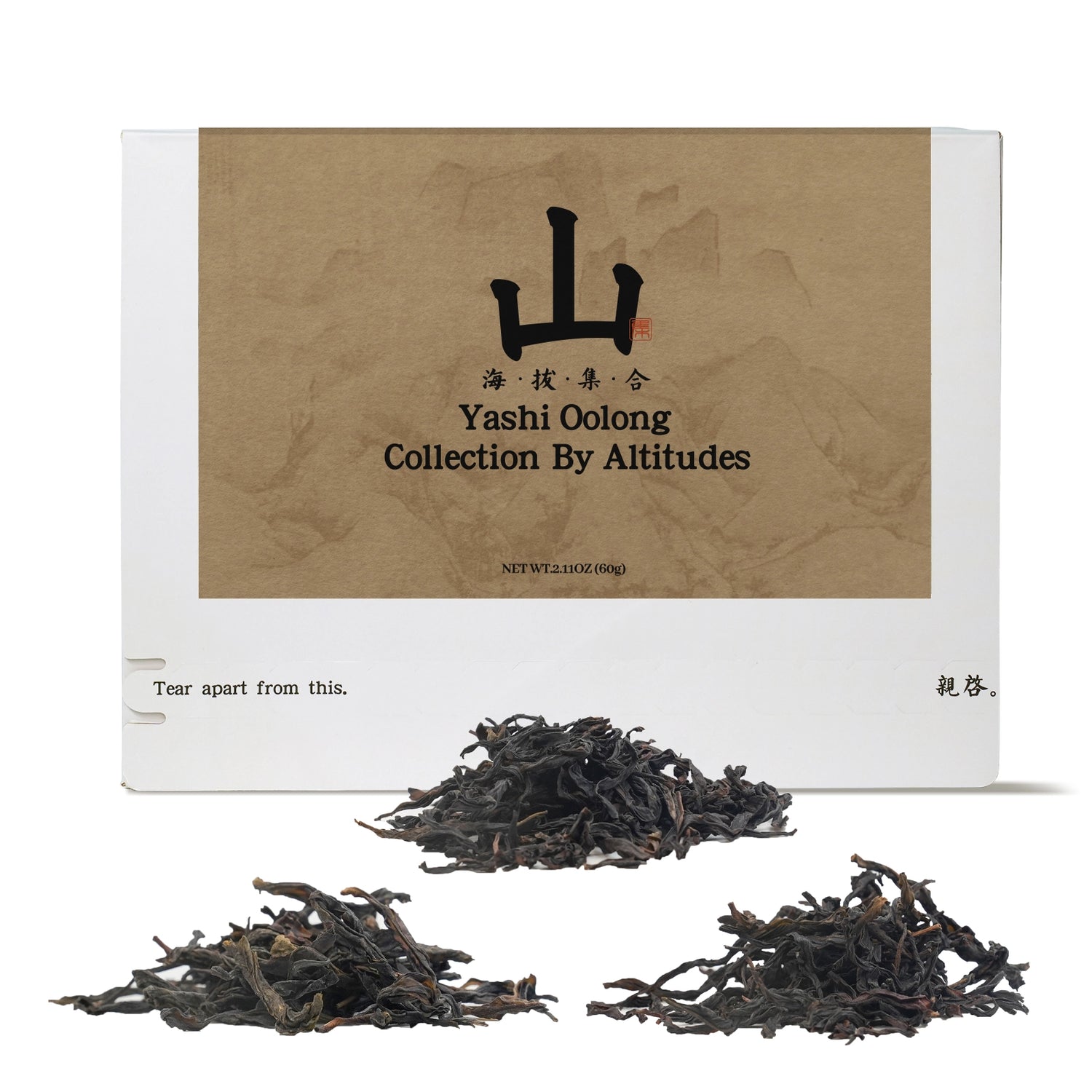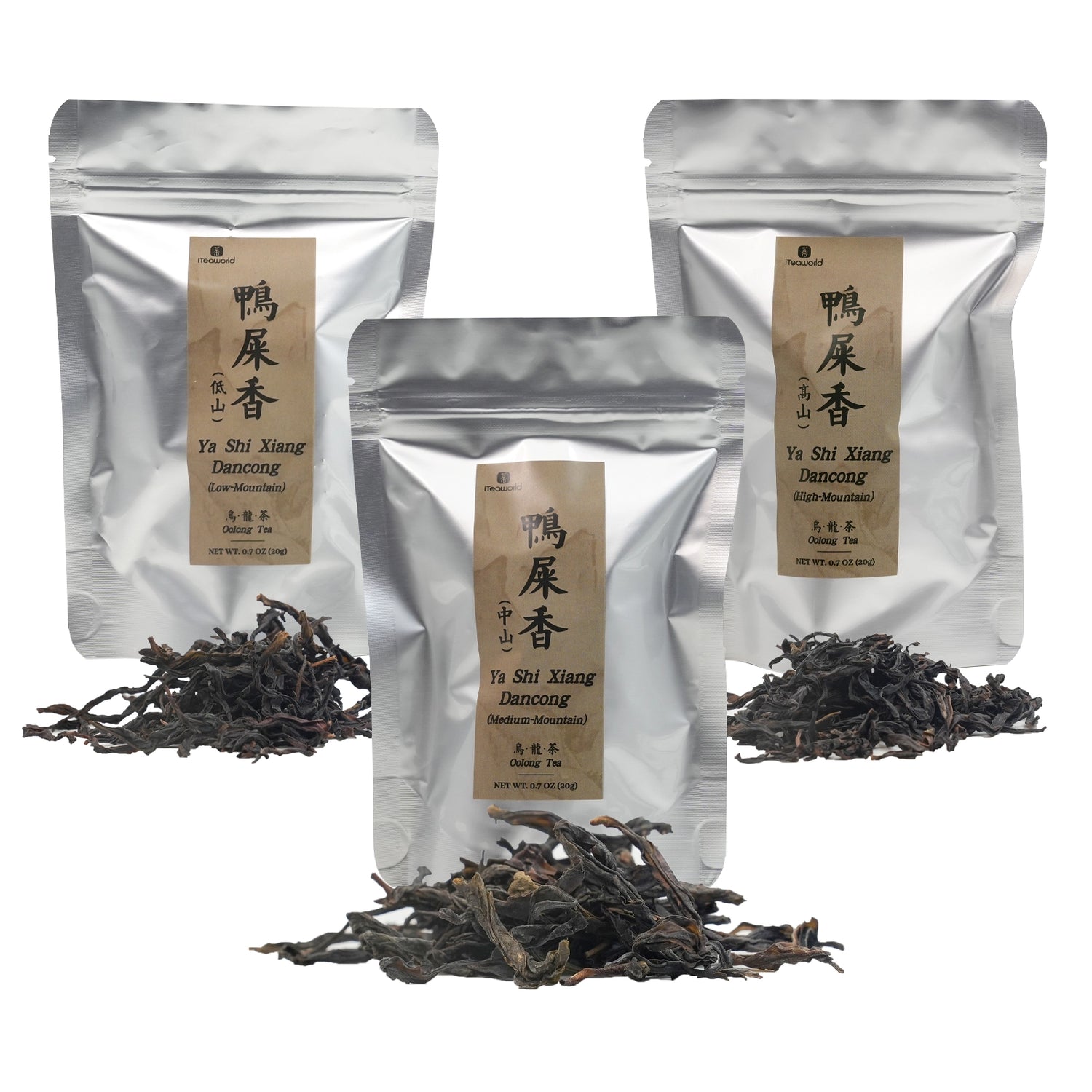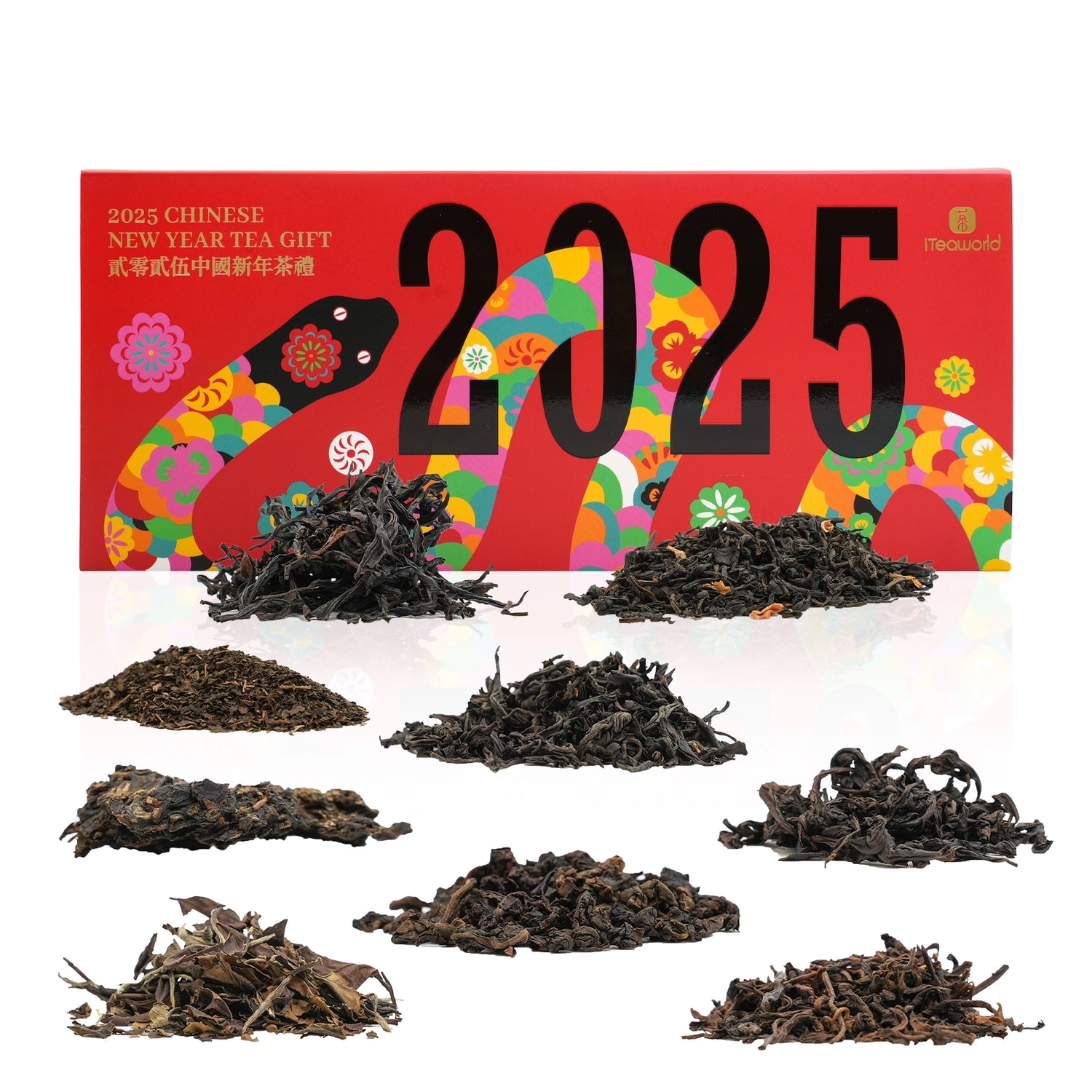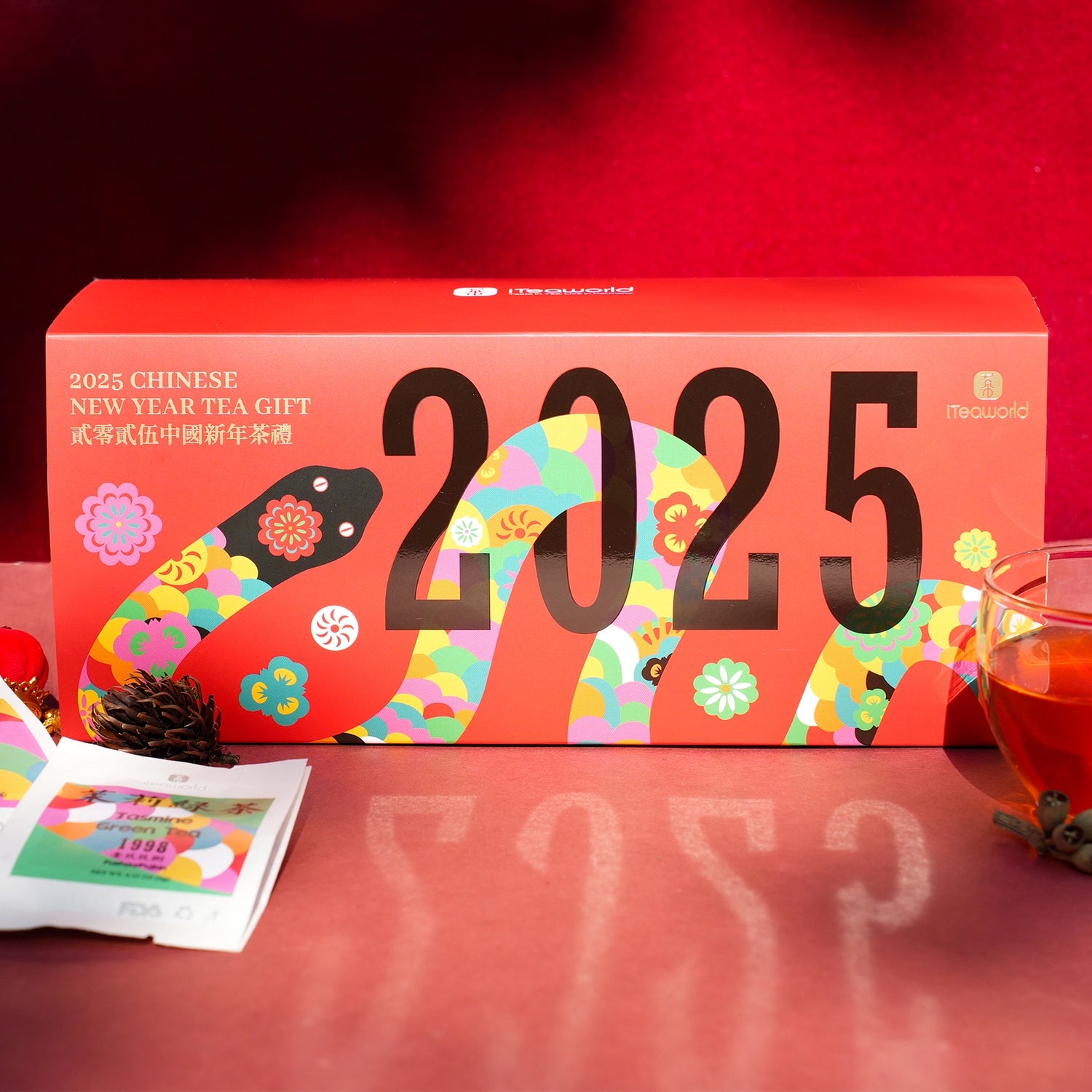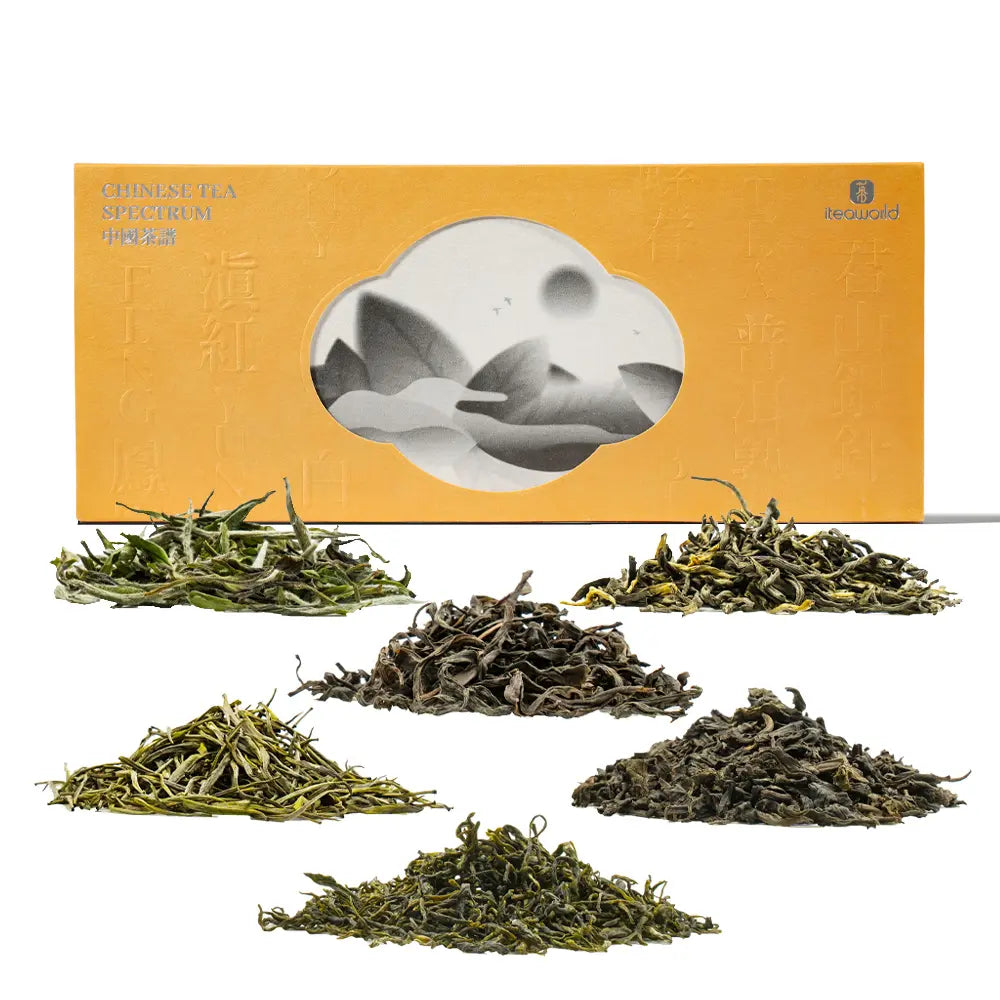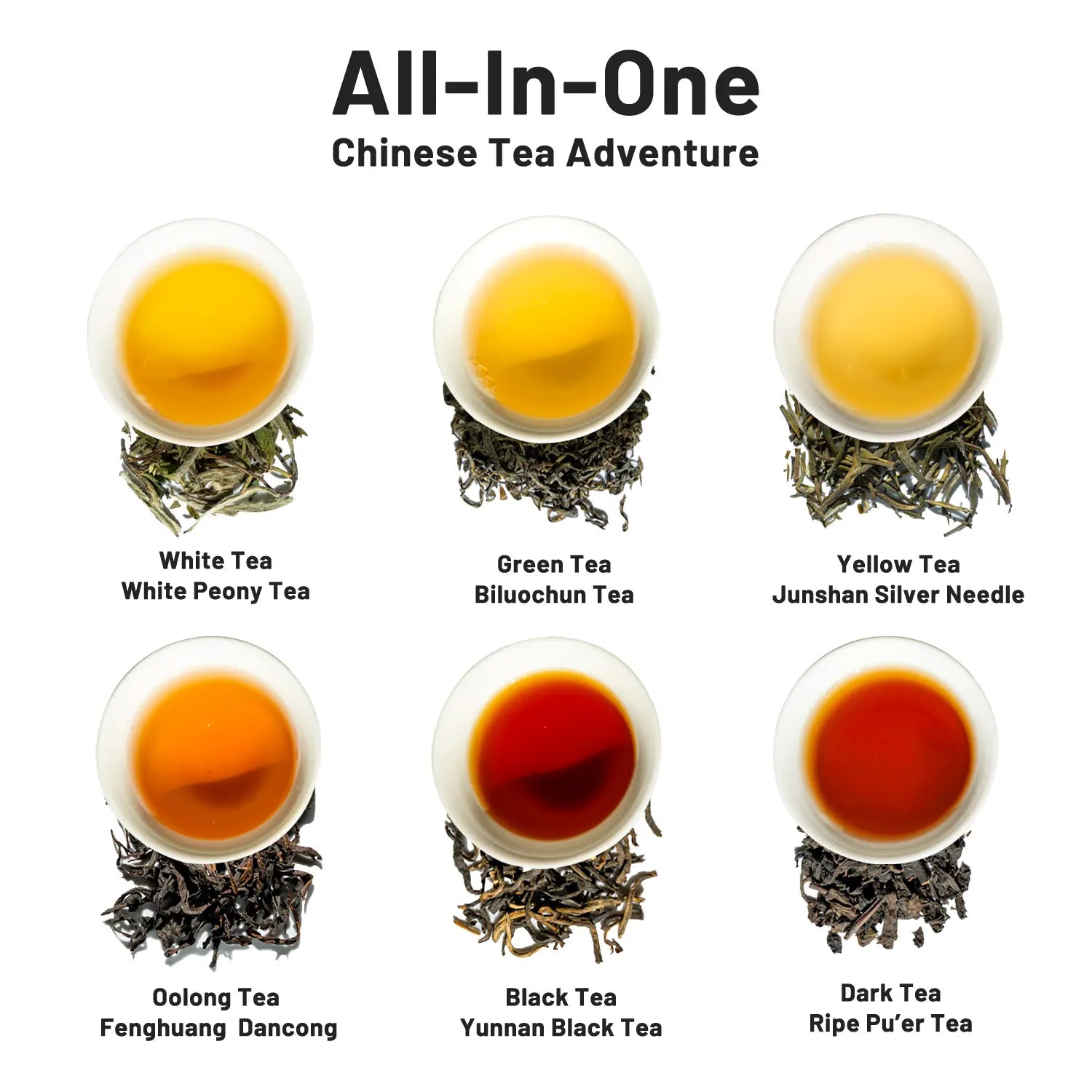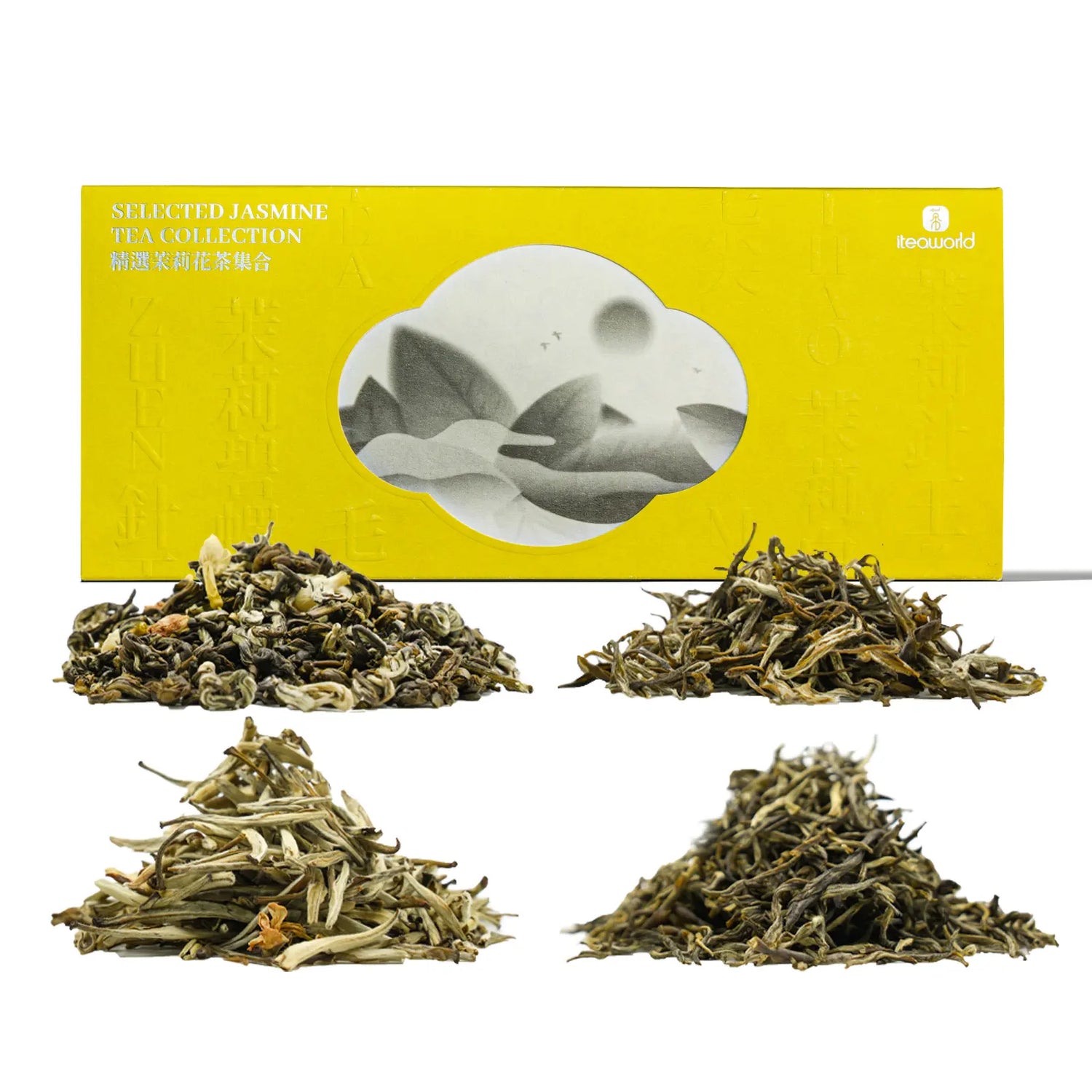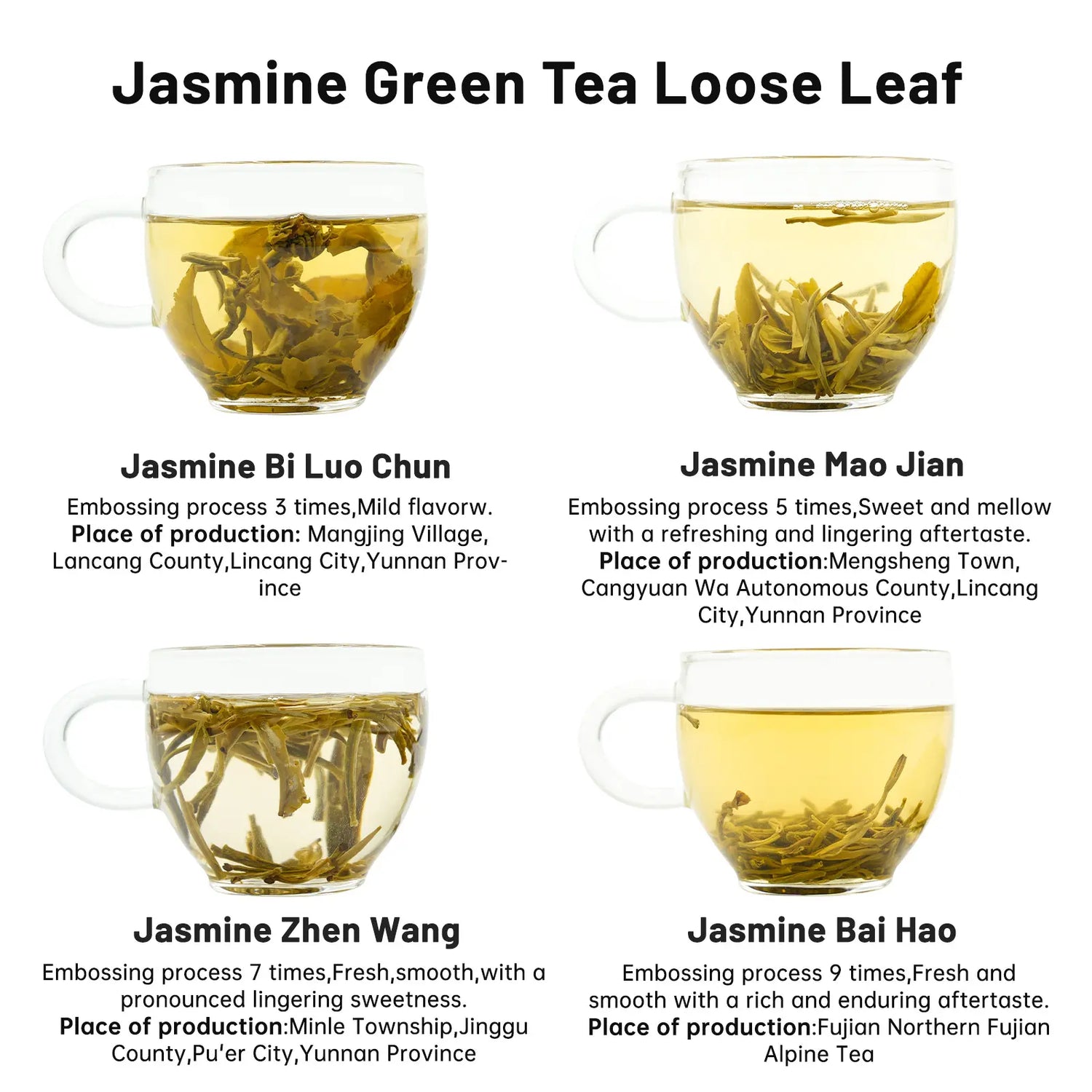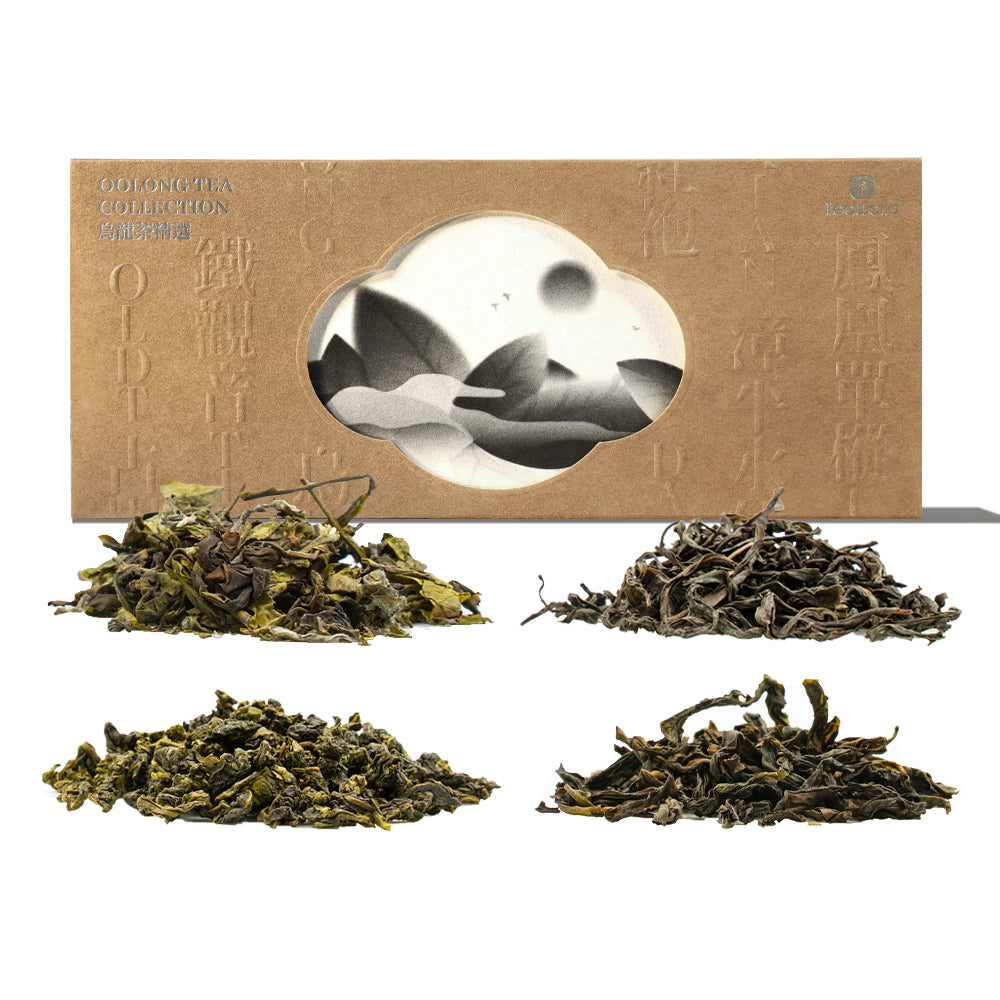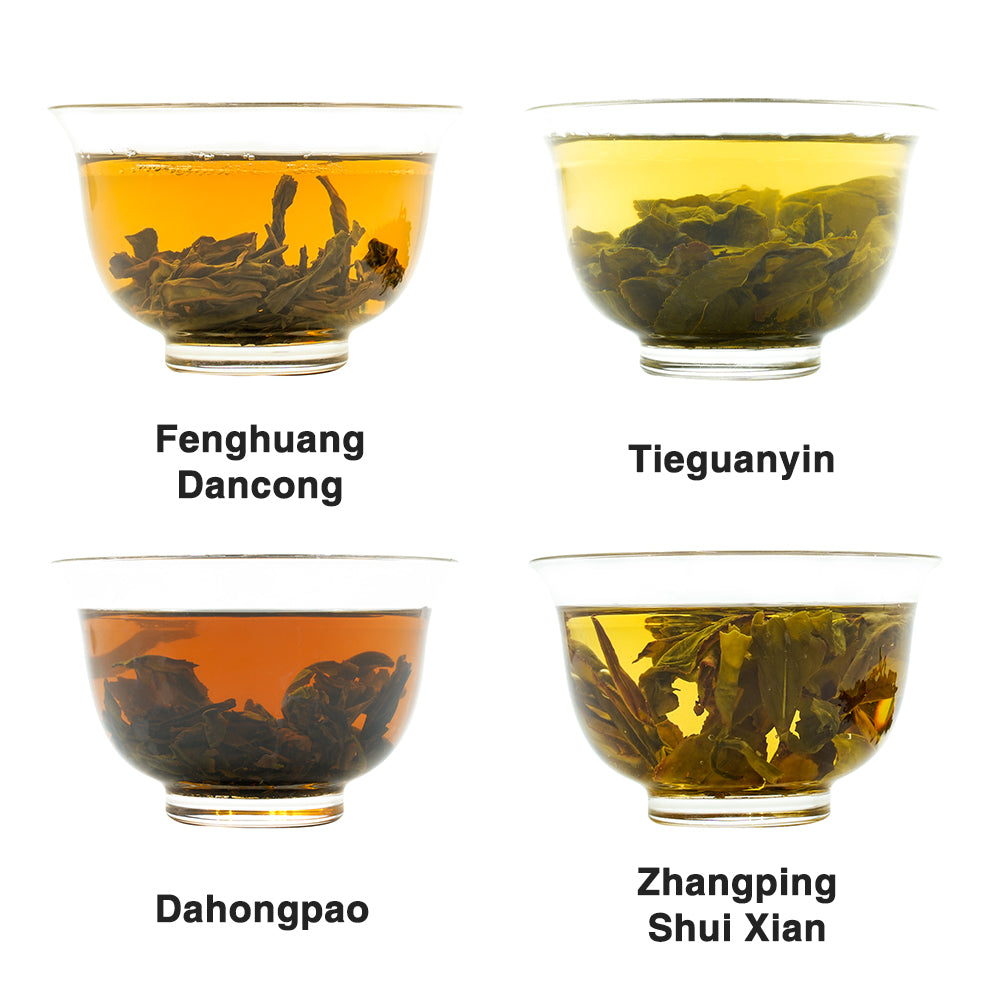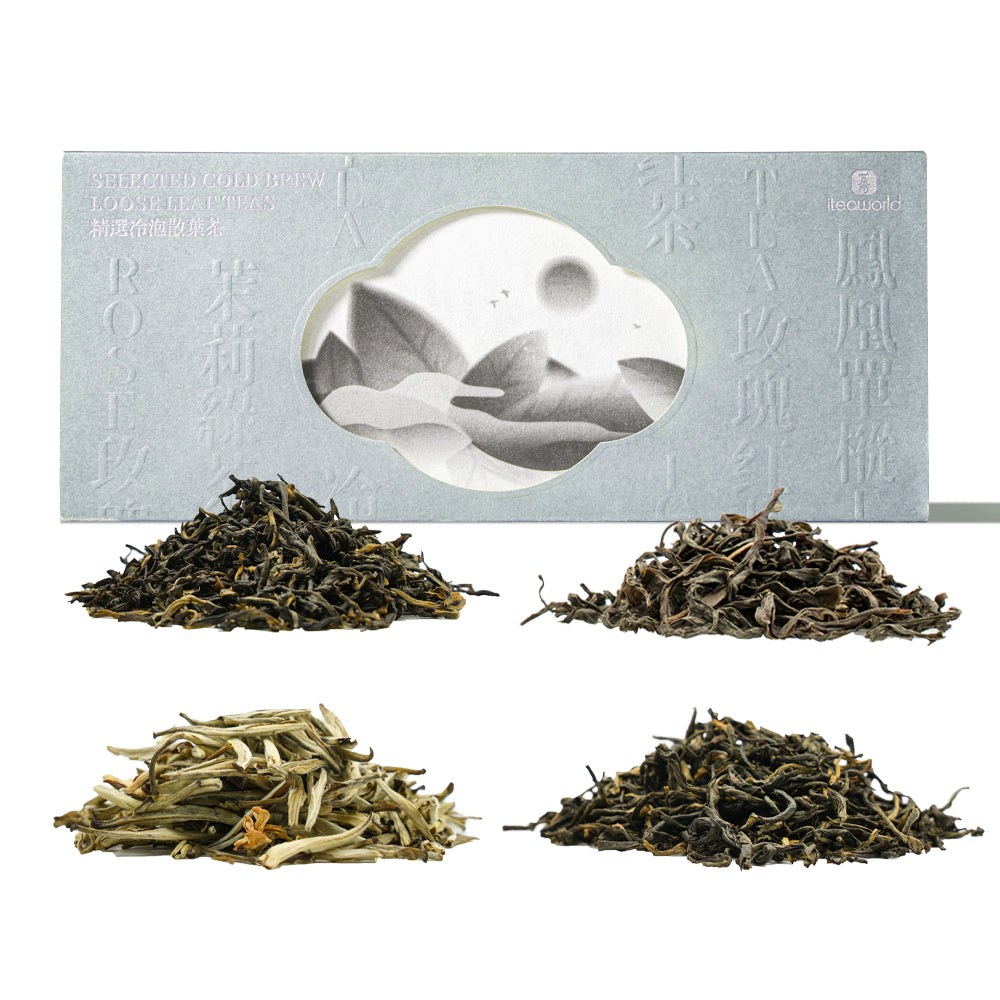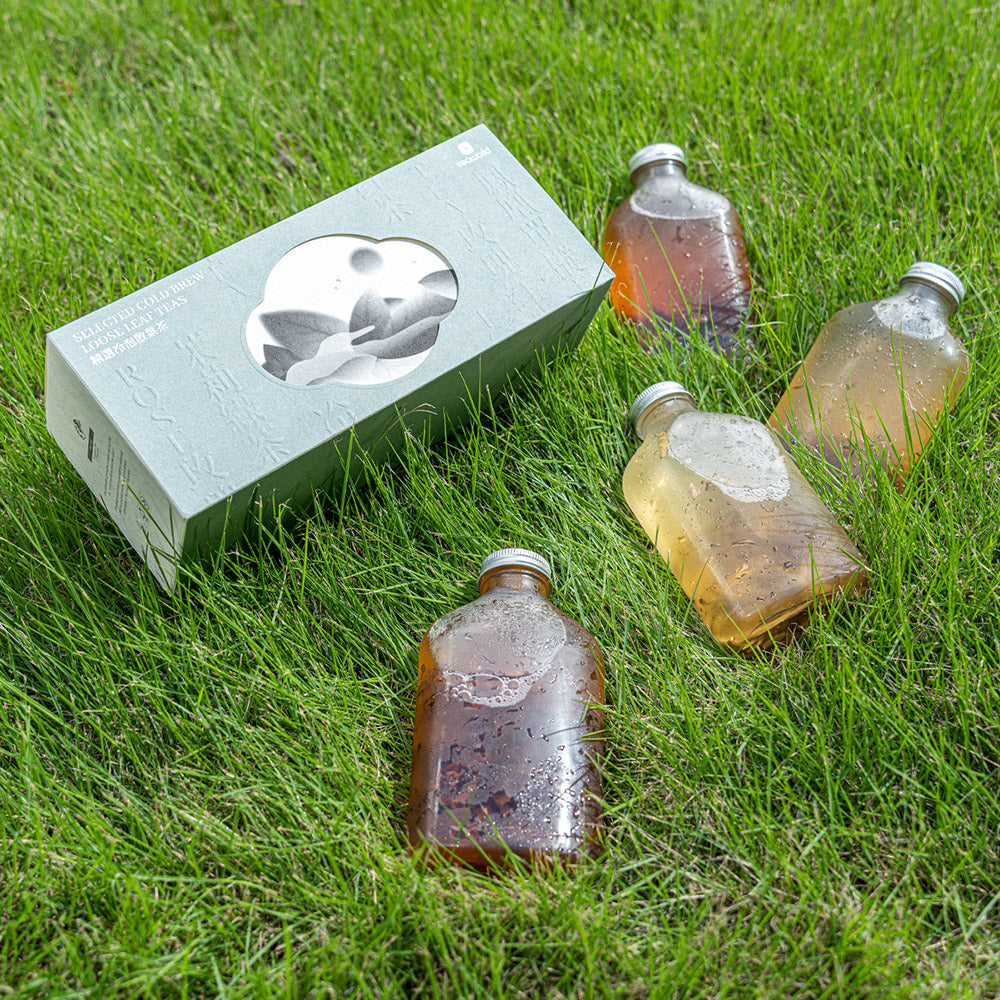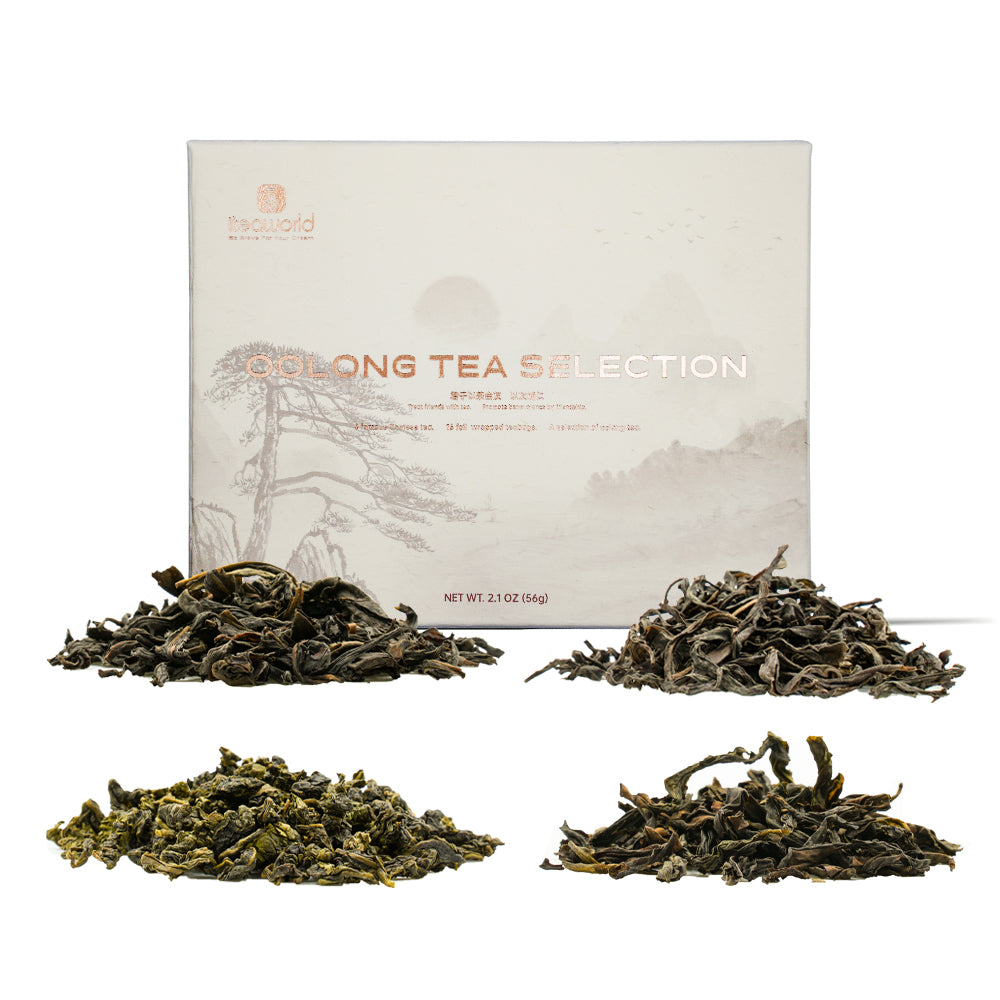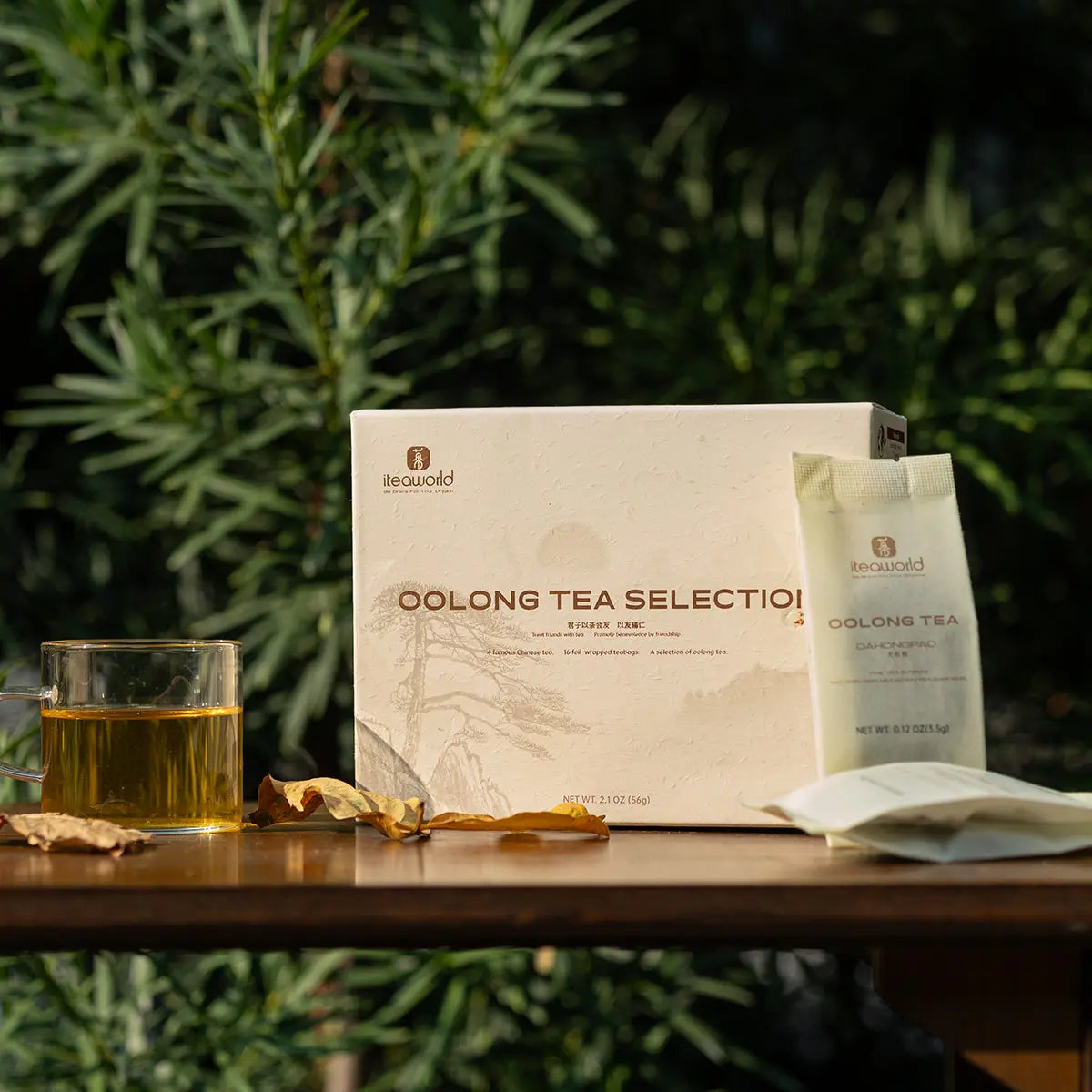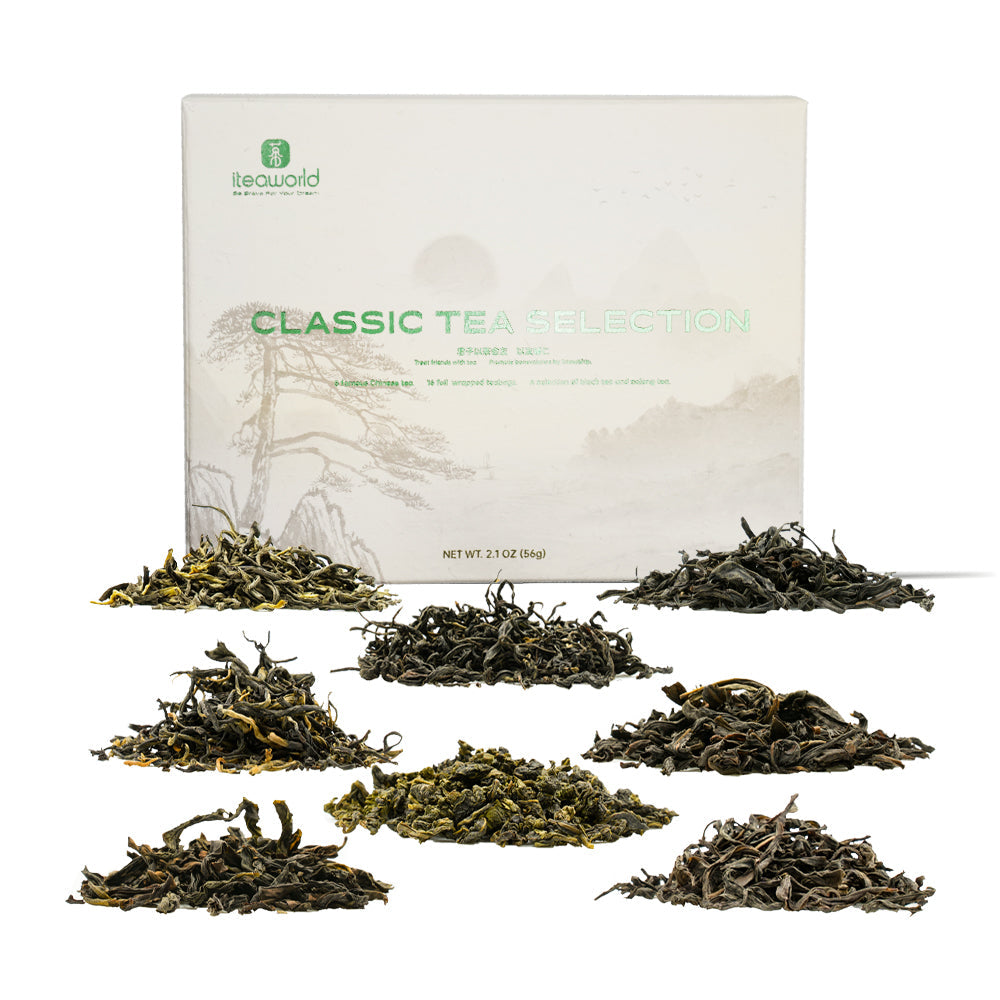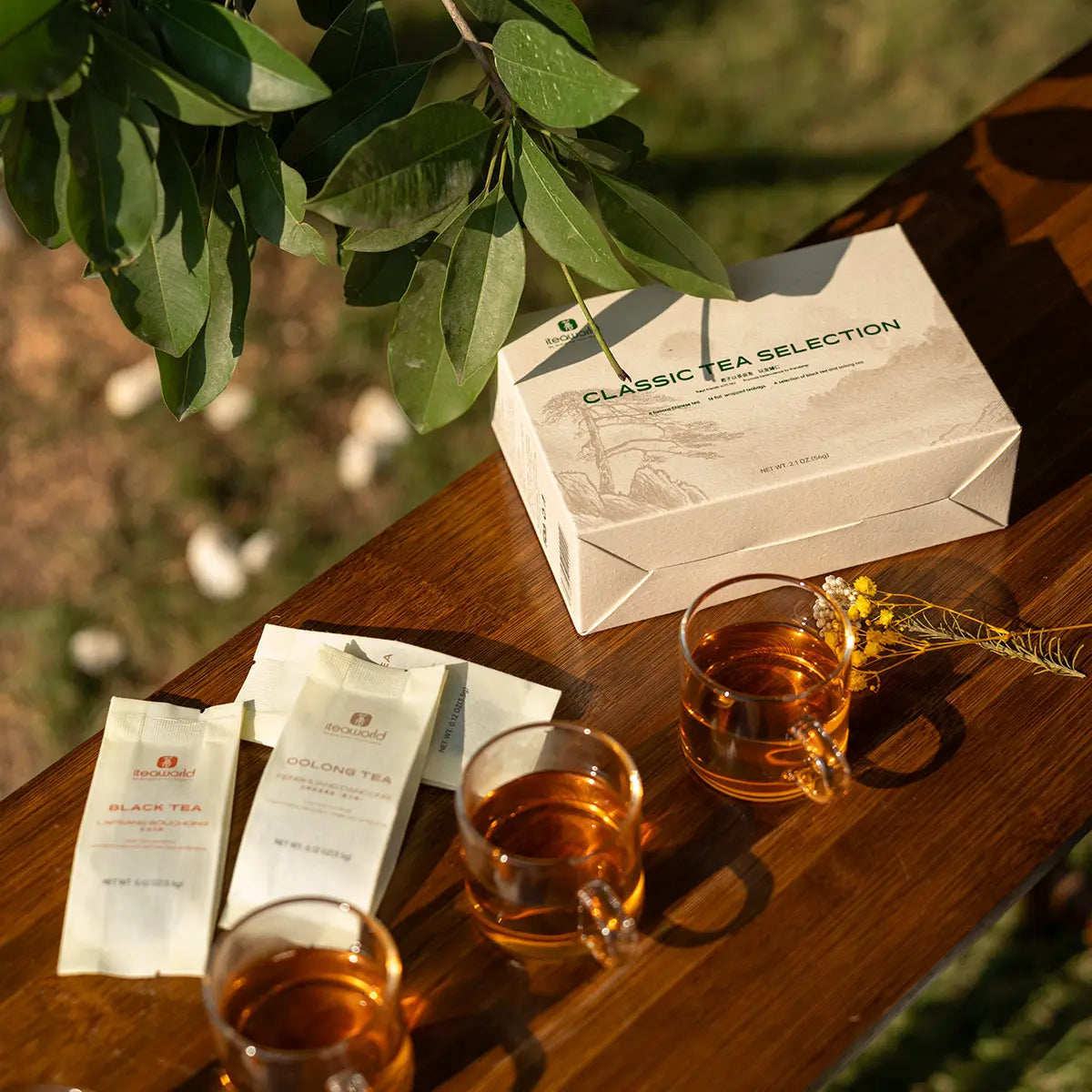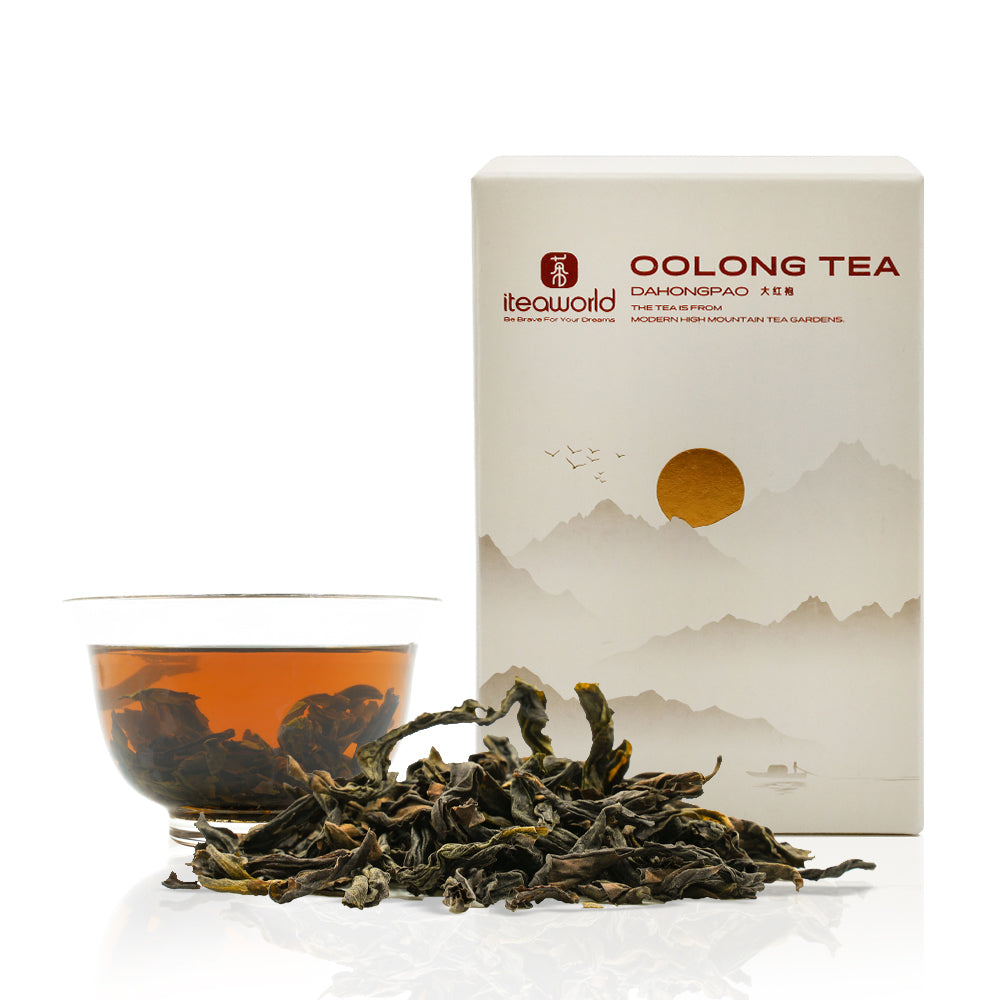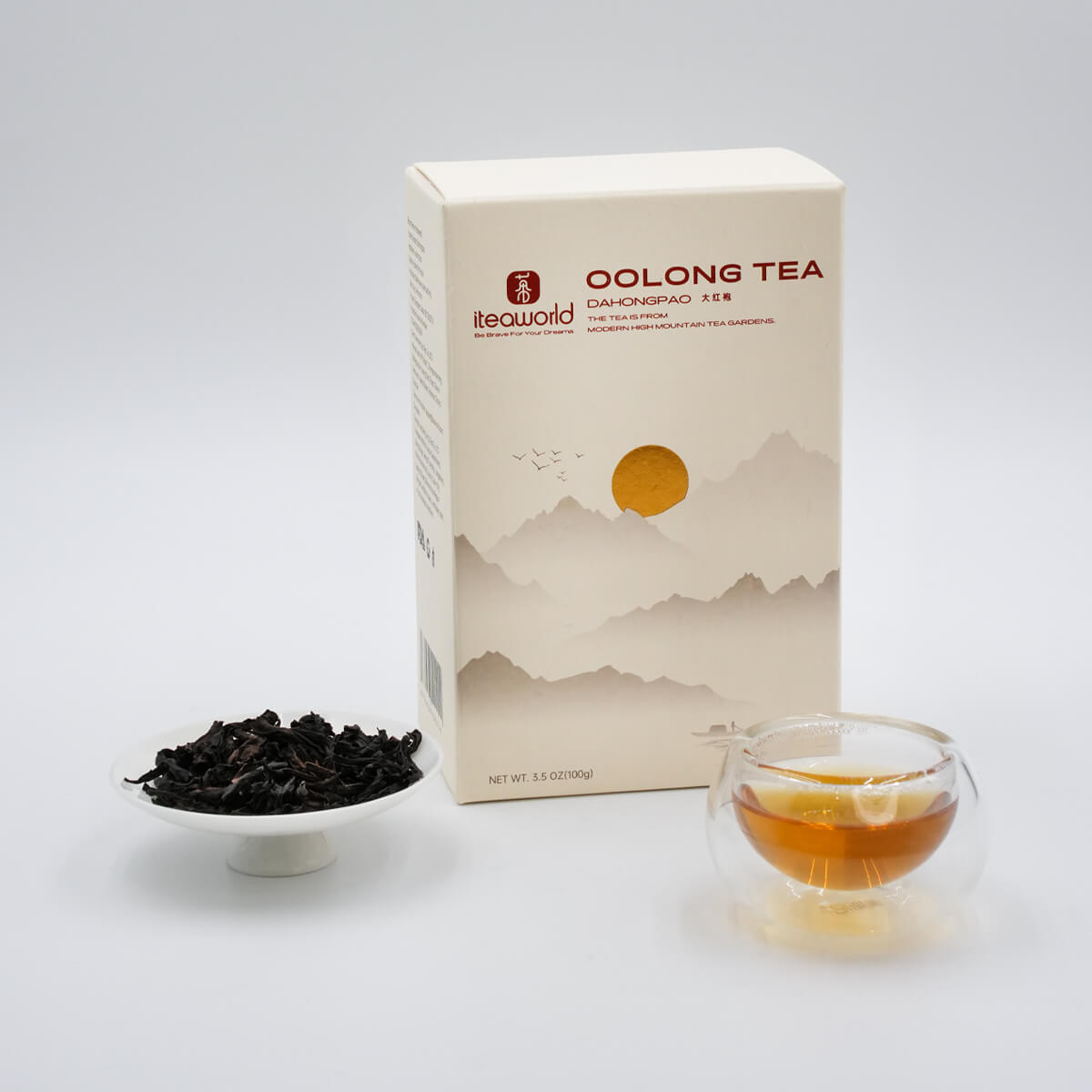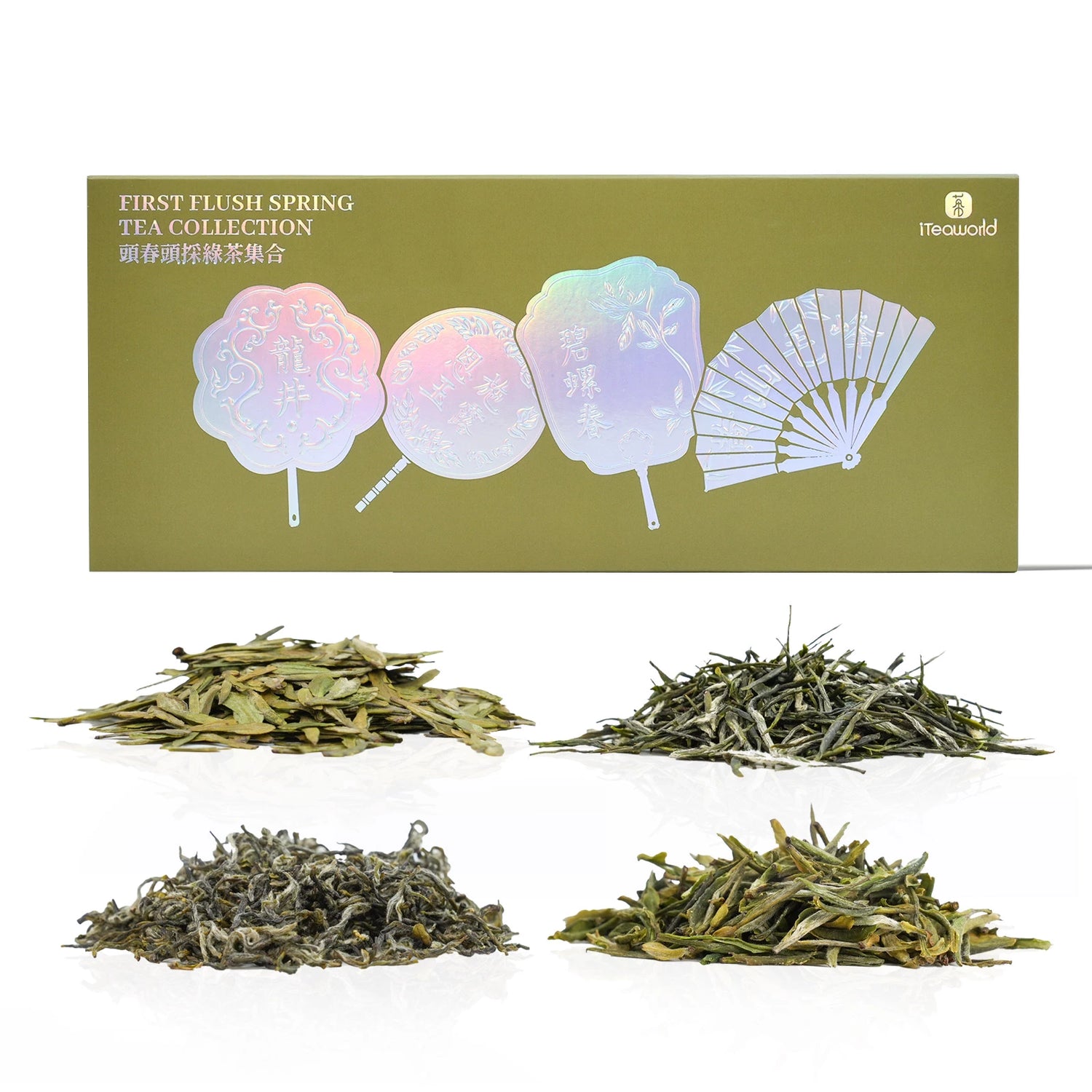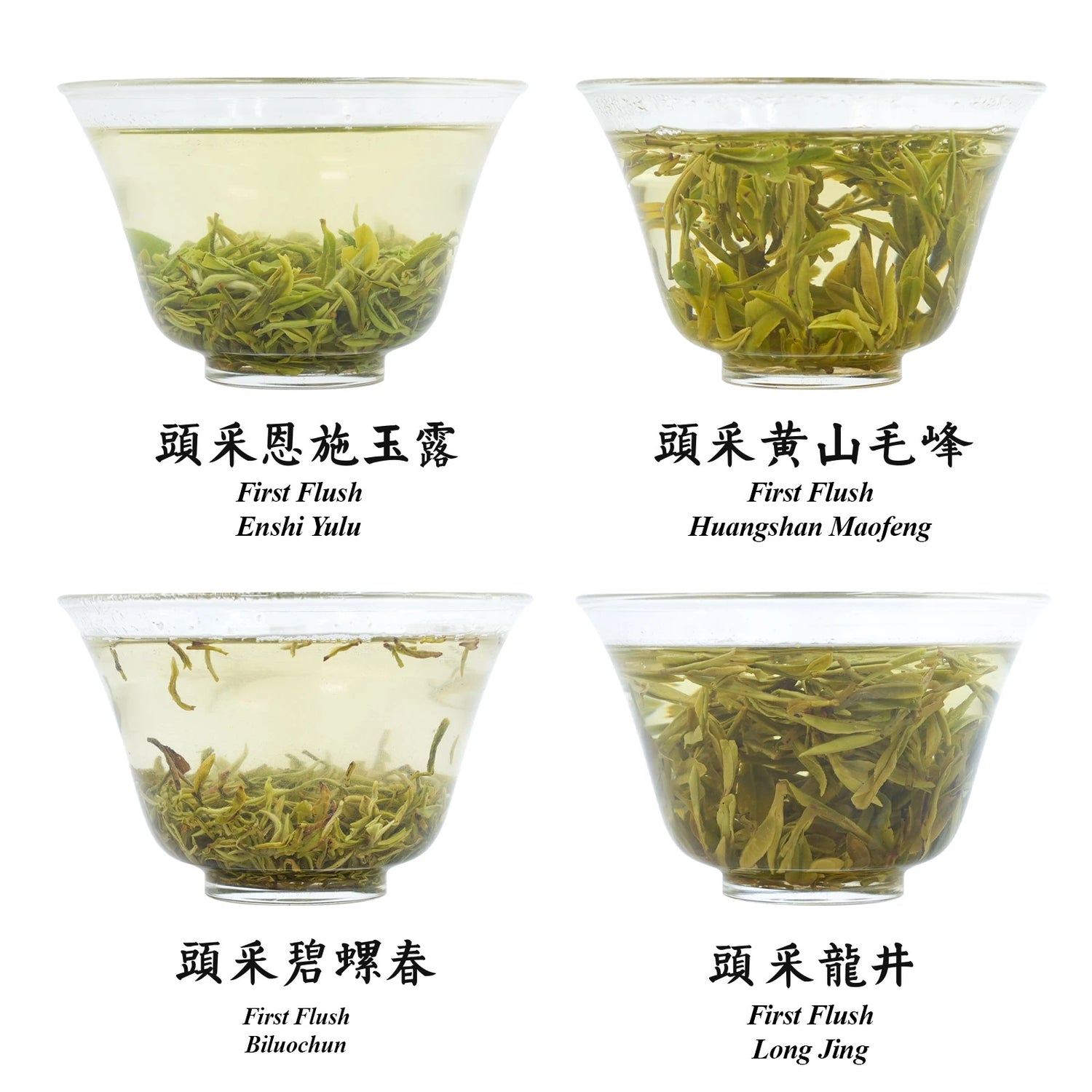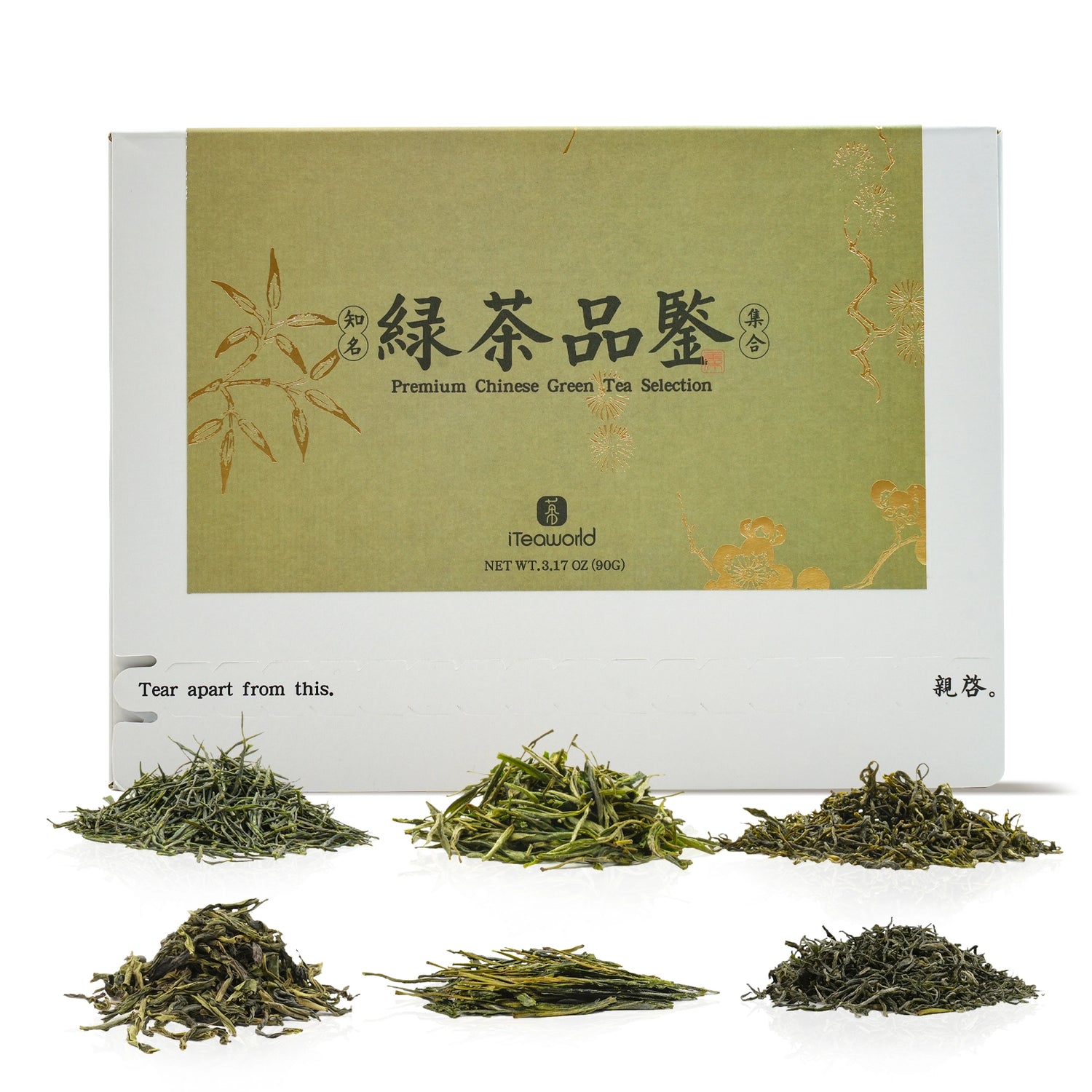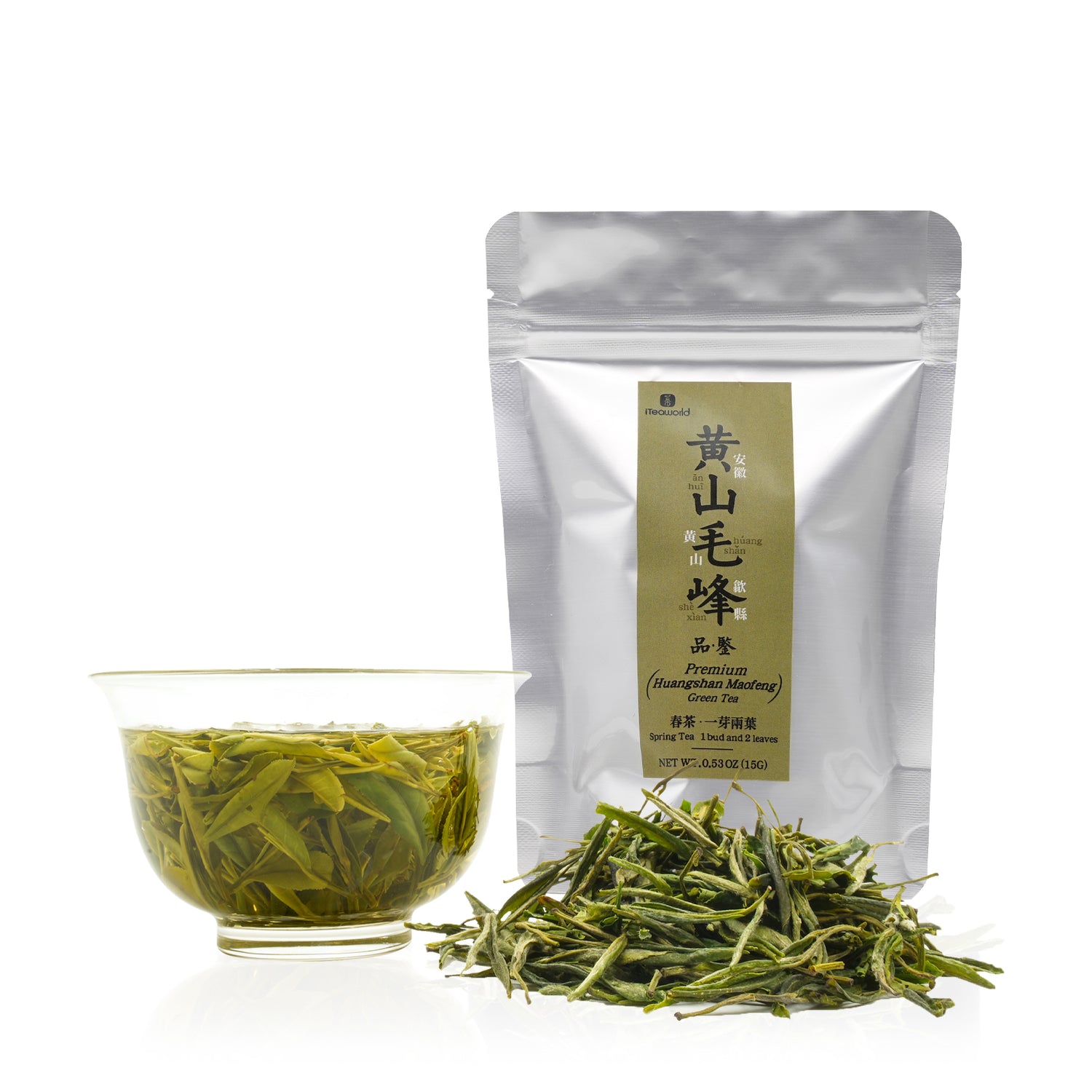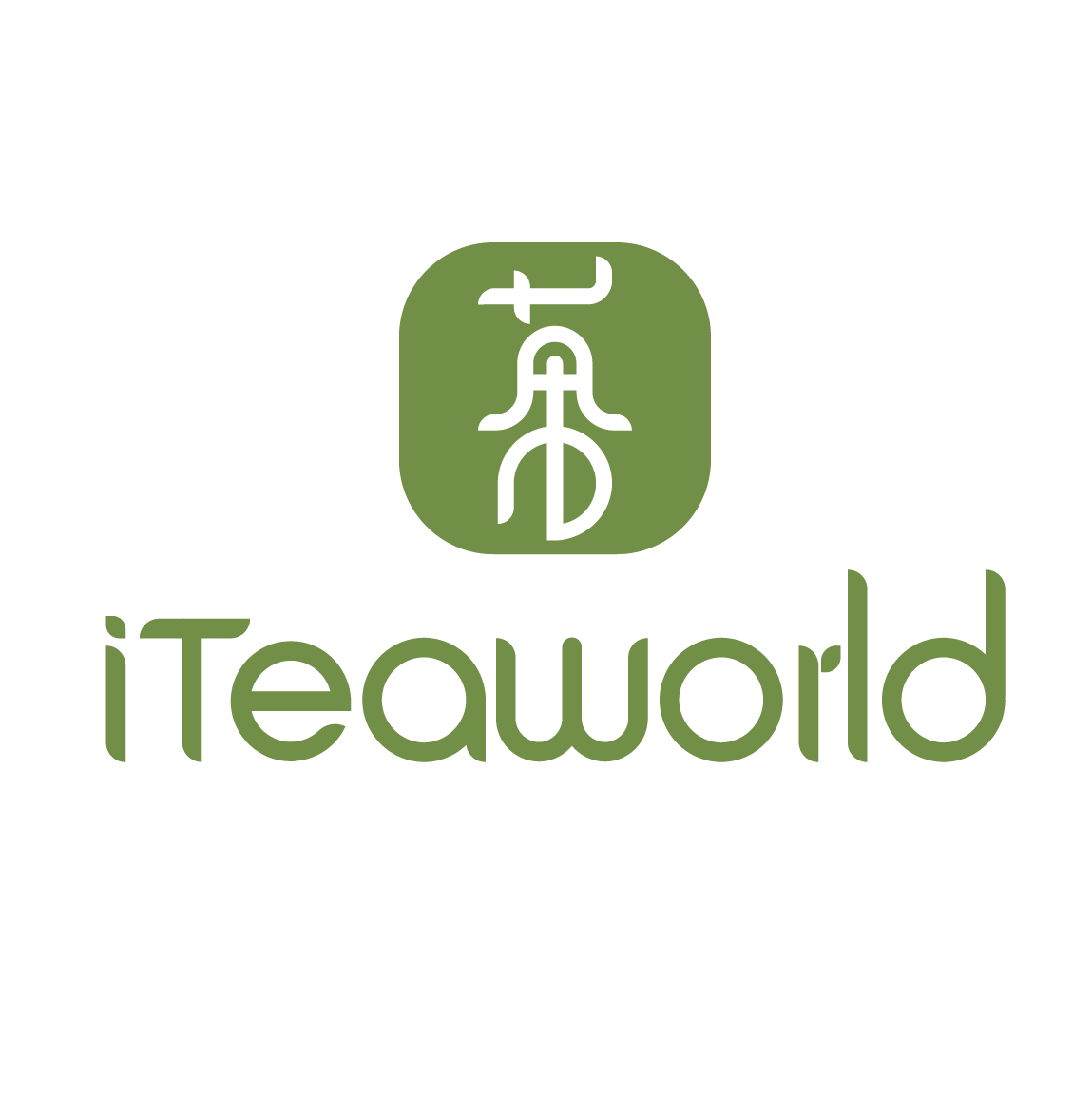Sort by:
26 products
26 products
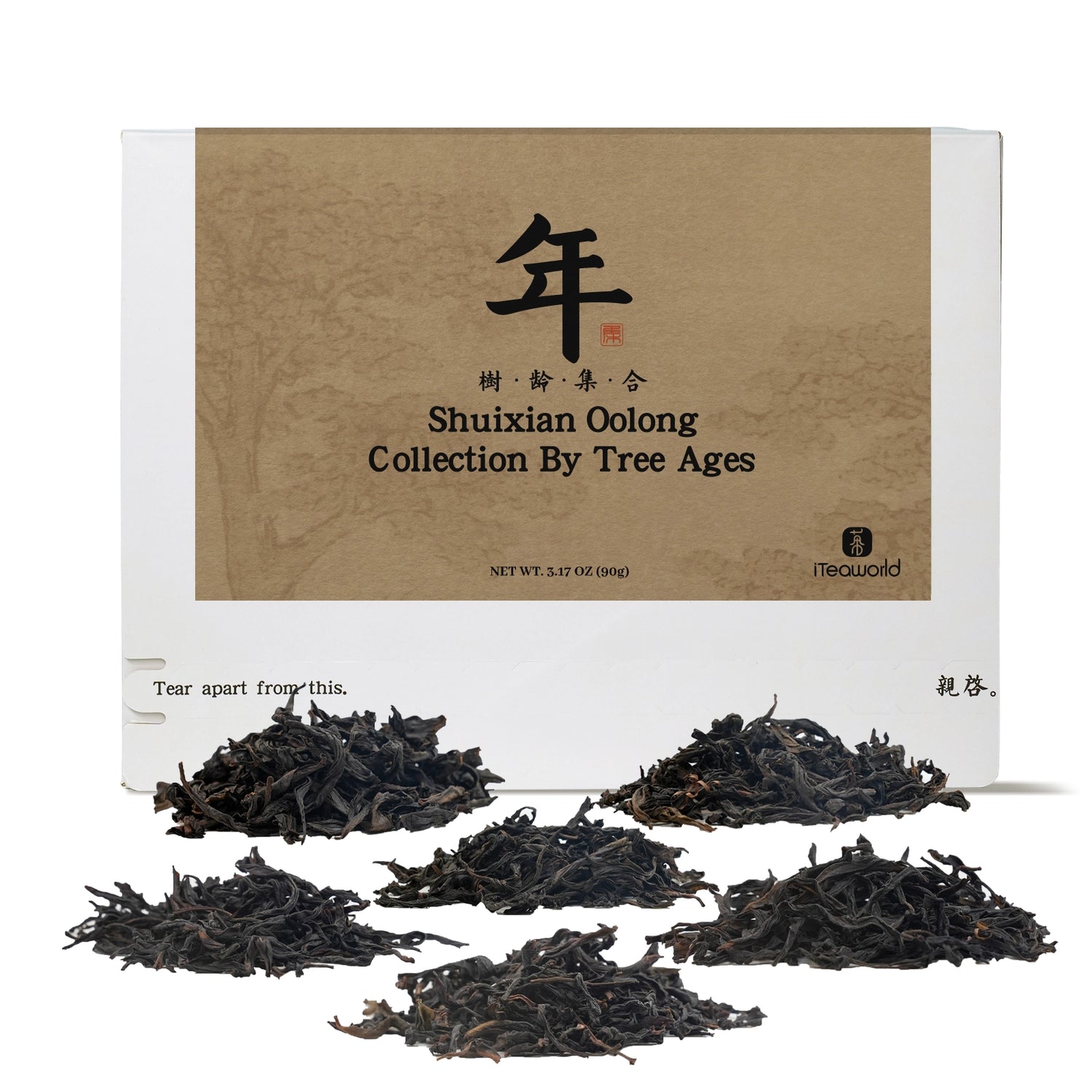

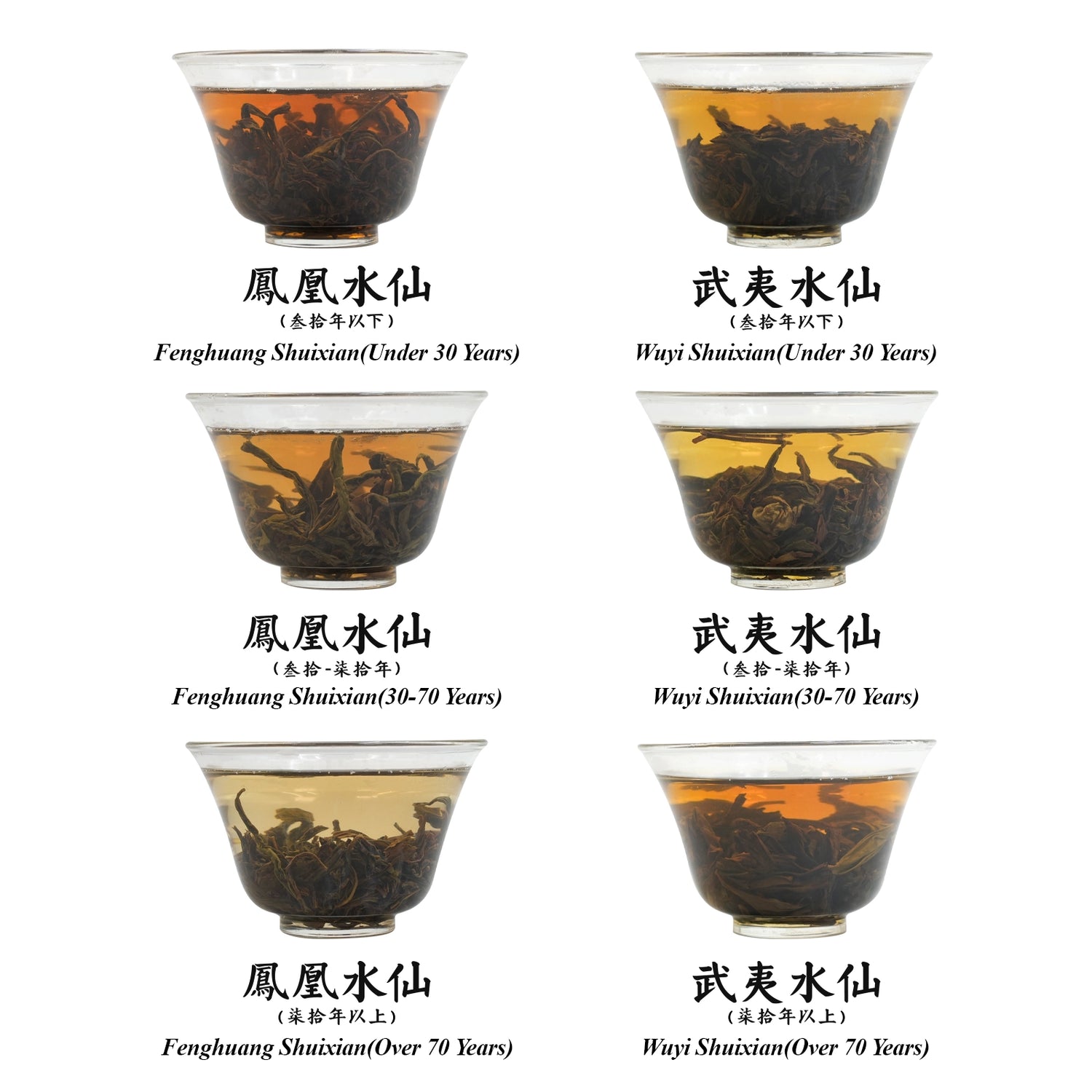
Chinese Oolong Tea Comparison Set: 6 Tree-Aged Blends (Fenghuang & Wuyi Shui Xian)90g
Chinese Oolong Tea Comparison Set: 6 Tree-Aged Blends (Fenghuang & Wuyi Shui Xian)90g
Maybe You’re Not a Fan of Aged Tea Trees
In both Pu-erh and oolong tea, the age of the tea tree matters. Generally, older trees are rarer, which drives up their price. The age of the trees is most significant in certain oolong varieties, like Shui Xian (including Phoenix Shui Xian, Wuyi Shui Xian, and Minbei Shui Xian).
Typically, younger tea trees contain higher levels of amino acids but lower levels of tea polyphenols and minerals. This results in teas that are sweeter and fresher, but with a lighter, less complex flavor. These teas tend to have more floral notes and are best suited for light fermentation and roasting processes.
On the other hand, older tea trees tend to have higher levels of tea polyphenols, fiber, sugars, and minerals. They’re not as restricted by processing techniques, and the resulting teas are often richer, with more prominent sweetness, a longer-lasting aftertaste, and better endurance for multiple infusions.
This product features Phoenix Shui Xian and Wuyi Shui Xian from the same origin, made with similar processes but from different-aged trees. It’s a great way to compare how tree age influences the flavor of oolong tea.
Products Included:
- Fenghuang Shuixian(Under 30 Years)
- Fenghuang Shuixian(30-70 Years)
- Fenghuang Shuixian(Over 70 Years)
- Wuyi Shuixian (Under 30 Years)
- Wuyi Shuixian (30-70 Years)
- Wuyi Shuixian (Over 70 Years)
Origin:
- Fenghuang Shuixian(Under 30 Years):Shenming Village, Fenghuang Town, Chaoan District, Chaozhou City, Guangdong Province, China
- Fenghuang Shuixian(30-70 Years):Daping Village, Fenghuang Town, Chaoan District, Chaozhou City, Guangdong Province, China
- Fenghuang Shuixian(Over 70 Years):Gezaiwei, Wudong Village, Fenghuang Town, Chaoan District, Chaozhou City, Guangdong Province, China.
- Wuyi Shuixian (Under 30 Years):Jingshui Village, Xingcun Town, Wuyishan City, Fujian Province, China
- Wuyi Shuixian (30-70 Years):Daan Village, Yangzhuang Township, Wuyishan City, Fujian Province
- Wuyi Shuixian (Over 70 Years):Tianxin Village, Wuyi Township, Wuyishan City, Fujian Province
Master Blender:
- Fenghuang Shuixian:Lin Jizhong,林纪中
- Wuyi Shuixian:Chen hui,陈辉
Processing Time:
- Fenghuang Shuixian:Early May 2023
- Wuyi Shuixian:May 2024
Best Before Date:
- 36months
Tea Variety:
- Fenghuang Shuixian variety
- Wuyi Shuixiann variety
Altitude:
- Fenghuang Shuixian(Under 30 Years):760 meters
- Fenghuang Shuixian(30-70 Years):800-90 meters
- Fenghuang Shuixian(Over 70 Years):1150 meters
- Wuyi Shuixian (Under 30 Years):400 meters
- Wuyi Shuixian (30-70 Years):800-900 meters
- Wuyi Shuixian (Over 70 Years):500 meters
Soil Type:
- Fenghuang Shuixian:yellow soil
- Wuyi Shuixian:gravelly soil
Oxidation Level:
- Medium oxidation (40-50%)
Roasting Level:
- Under 30 Years (Option 1): Three roasts, medium-heavy fire (110-115°C / 230-239°F)
- 30-70 Years (Option 1): Three roasts, medium-heavy fire (110-115°C / 230-239°F)
- Over 70 Years (Option 1): Three roasts, medium fire (110-115°C / 230-239°F)
- Under 30 Years (Option 2): Two roasts, heavy fire (110-115°C / 230-239°F)
- 30-70 Years (Option 2): Three roasts, light fire (95-105°C / 203-221°F)
- Over 70 Years (Option 2): Light fire, 95-105°C (203-221°F)
- (Light Fire ~ 80°C, Medium Fire ~ 100°C, Heavy Fire ~ 120°C)
Roasting Method (Charcoal or Electric):
- charcoal briquetting
Brewing Recommendations:
Chinese-Style Oolong Brewing
Teaware: Gaiwan or clay teapot
Water Temp: 212°F (100°C)
Tea-to-Water Ratio: 1g per 0.7 oz (20ml)
Steep Time: 10-15 sec (1-3 steeps), add 5-10 sec after
Re-Steep: Up to 7 times
Western-Style Oolong Brewing
Teaware: Teapot, infuser, or French press
Water Temp: 100°C (212°F)
Tea-to-Water Ratio: 1 tsp (2-3g) per 8 oz (240ml)
Steep Time: 3minutes
Re-Steep: 3 times, adding 1minutes each time
Soil Environment
In The Classic of Tea by Lu Yu, it’s mentioned that tea trees grow best in different types of soils: “the best grow in rotten rocks, the middle in gravelly soil, and the worst in yellow earth.” Soil with rocks provides good drainage and airflow, preventing both waterlogging in heavy rain and dryness during droughts. It’s rich in minerals, and tea trees thrive in soil that’s both moist and acidic. For example, the finest Wuyi rock teas grow in soil made up of rotten rocks and gravel. On the other hand, lower-grade Wuyi teas, which mainly grow in yellow earth, lack the signature rocky flavor and have simpler, less complex aromas and tastes.
If you want to experience how different soil types affect the flavor of oolong tea, the best example would be a collection of Wuyi Rock Teas from various environments. This includes:
Core Zhengyan Wuyi Tea: Known for its rocky, gravelly soil, represented by the famous Three Pits and Two Streams (San Keng Liang Jian).
Wuyi Zhengyan Tea: Grown in soils rich in sandy gravel rocks.
Wuyi Ban Yan Tea: Grown in thicker layers of rocky red soil.
Wuyi Zhou Tea: Grown in soils dominated by loess (yellow earth).
Products Included:
- Core Zhengyan Wuyi Tea(Core Zheng Yan)10g
- Wuyi Rou Gui (Zheng Yan) 10g
- Wuyi Rou Gui (Ban yan Tea) 20g
- Wuyi Rou Gui (Zhou Cha) 20g
Origin:
- Core Zheng Yan:Wuyuan Jian, Tianxin Village, Wuyi Town, Wuyishan City, Fujian Province
- Zheng Yan:Tianxin Village, Wuyi Town, Wuyishan City, Fujian Province
- Ban yan Tea:Jingshui Village, Xingcun Town, Wuyishan City, Fujian Province, China
- Zhou Cha:Xingtian Town, Wuyishan City, Fujian Province, China
Master Blender:
- Chen Hui
Processing Time:
- October 2024
Best Before Date:
- 36 months
Tea Variety:
- Wuyi Cinnamon Varieties
Altitude:
- Core Zheng Yan:342 meters
- Zheng Yan:400-500 meters
- Ban yan Tea:about 400 meters
- Zhou Cha: about 200 meters
Soil Type:
- Core Zheng Yan:Gravel Soil
- Zheng Yan:sandy gravelly soil
- Ban yan Tea:red soil dominated by thickly bedded rock
- Zhou Cha: yellow soil
Oxidation Level:Medium oxidation (45-55%)
Roasting Level:
- Core Zheng Yan:Three roasts, heavy fire, 105-110°C (221-230°F)
- Zheng Yan:Three roasts, heavy fire, 105-110°C (221-230°F)
- Ban yan Tea:Three roasts, heavy fire, 105-110°C (221-230°F)
- Zhou Cha: Two roasts, medium-heavy fire, around 115°C (239°F)
Roasting Method (Charcoal or Electric):
- charcoal briquetting
Brewing Recommendations:
Chinese-Style Oolong Brewing
Teaware: Gaiwan or clay teapot
Water Temp: 212°F (100°C)
Tea-to-Water Ratio: 1g per 0.7 oz (20ml)
Steep Time: 15 sec (1-3 steeps), add 5-10 sec after
Re-Steep: Up to 7 times
Western-Style Oolong Brewing
Teaware: Teapot, infuser, or French press
Water Temp: 212°F (100°C)
Tea-to-Water Ratio: 1 tsp (2-3g) per 8 oz (240ml)
Steep Time: 3 minutes
Re-Steep: 3 times, adding 1 minutes each time
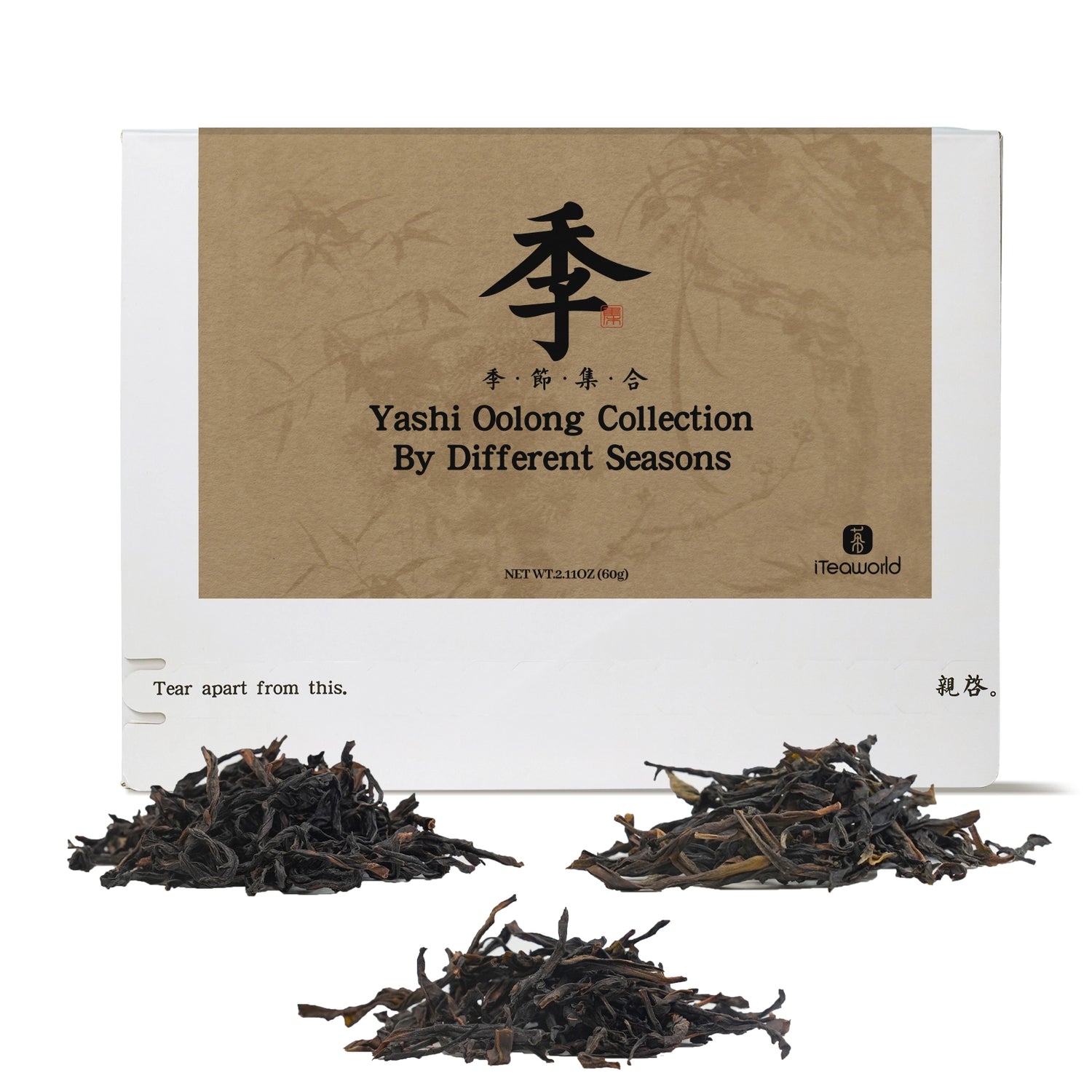
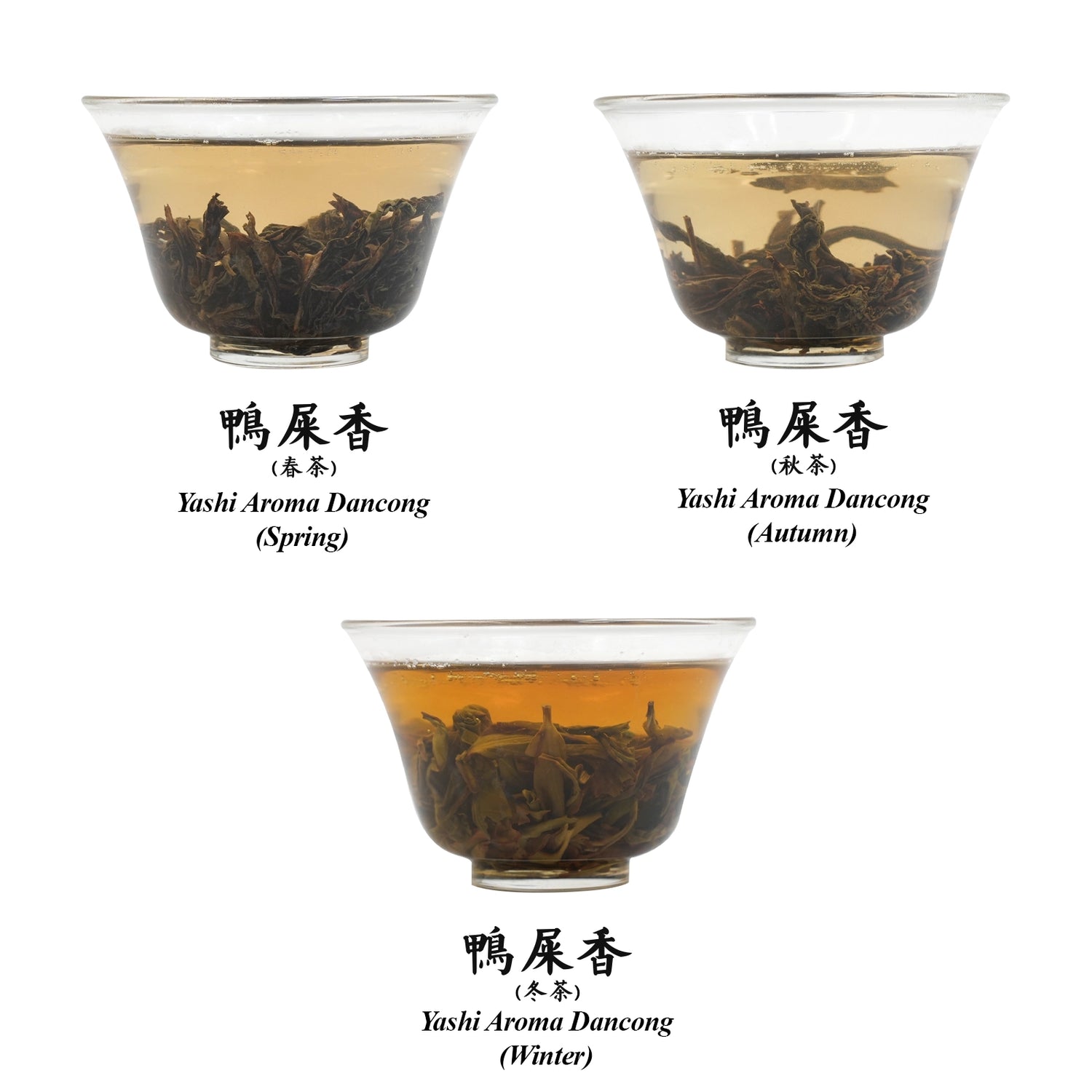
Ya Shi Xiang oolong Comparison Set – Spring, Autumn & Winter Varieties 60g
Ya Shi Xiang oolong Comparison Set – Spring, Autumn & Winter Varieties 60g
Seasonality of Oolong Tea
Oolong tea can be harvested in all four seasons: spring, summer, autumn, and winter. However, Wuyi rock tea is only harvested in the spring. Oolong teas picked in the midday usually have the most pronounced aroma. Summer teas are mostly used in milk tea and are less common in loose leaf tea markets.
Spring teas tend to grow slower, resulting in higher levels of amino acids and tea polyphenols, with a lower ratio of phenols to amino acids. However, due to the frequent rainy weather in tea-growing areas like Fujian and Guangdong, spring teas may have less aromatic compounds than autumn or winter teas. Therefore, autumn and winter oolongs tend to have a stronger aroma. Winter oolongs, in particular, may even have a crisp, cold-like fragrance. Spring oolongs, on the other hand, tend to be richer in substances, offering a sweeter and fresher taste.
This product features three different seasonal Duck Shit Aroma teas from the same tea master in Hutou Village, Fenghuang Town. The oxidation and roasting levels are different for each, as oolong tea is all about adjusting to the leaves' conditions. Winter leaves are thinner, so oxidation and roasting are usually lighter. Try these three teas to see if you can notice the flavor differences between the seasons.
Products Included:
- Ya Shi Xiang (Duck Shit) Dan Cong Oolong(Spring) 20g
- Ya Shi Xiang (Duck Shit) Dan Cong Oolong(Autumn) 20g
- Ya Shi Xiang (Duck Shit) Dan Cong Oolong(Winter) 20g
Origin:Hutou Village, Fenghuang Town, Chaoan District, Chaozhou City, Guangdong Province, China
Master Blender:Lin Shupeng
Processing Time:November 20, 2024
Best Before Date:36months
Tea Variety:Ya Shi Xiang (Duck Shit) Dan Cong variety
Altitude:300-400 meters
Soil Type:yellow soil
Oxidation Level: Medium oxidation (40-50%)
Roasting Level:
- Spring: Two roasts, medium fire, around 100°C (212°F)
- Autumn: Two roasts, medium fire, around 100°C (212°F)
- Winter: One roast, light fire, around 80°C (176°F)Very light roast, 70-80°C (158-176°F)
Roasting Method (Charcoal or Electric):charcoal briquetting
Brewing Recommendations:
Chinese-Style Oolong Brewing
- Teaware: Gaiwan or clay teapot
- Water Temp: 212°F (100°C)
- Tea-to-Water Ratio: 1g per 0.7 oz (20ml)
- Steep Time: 15 sec (1-3 steeps), add 5-10 sec after
- Re-Steep: Up to 7 times
Western-Style Oolong Brewing
- Teaware: Teapot, infuser, or French press
- Water Temp: 212°F (100°C)
- Tea-to-Water Ratio: 1 tsp (2-3g) per 8 oz (240ml)
- Steep Time: 3-5 minutes
- Re-Steep: Up to 3 times, adding 1minutes each time
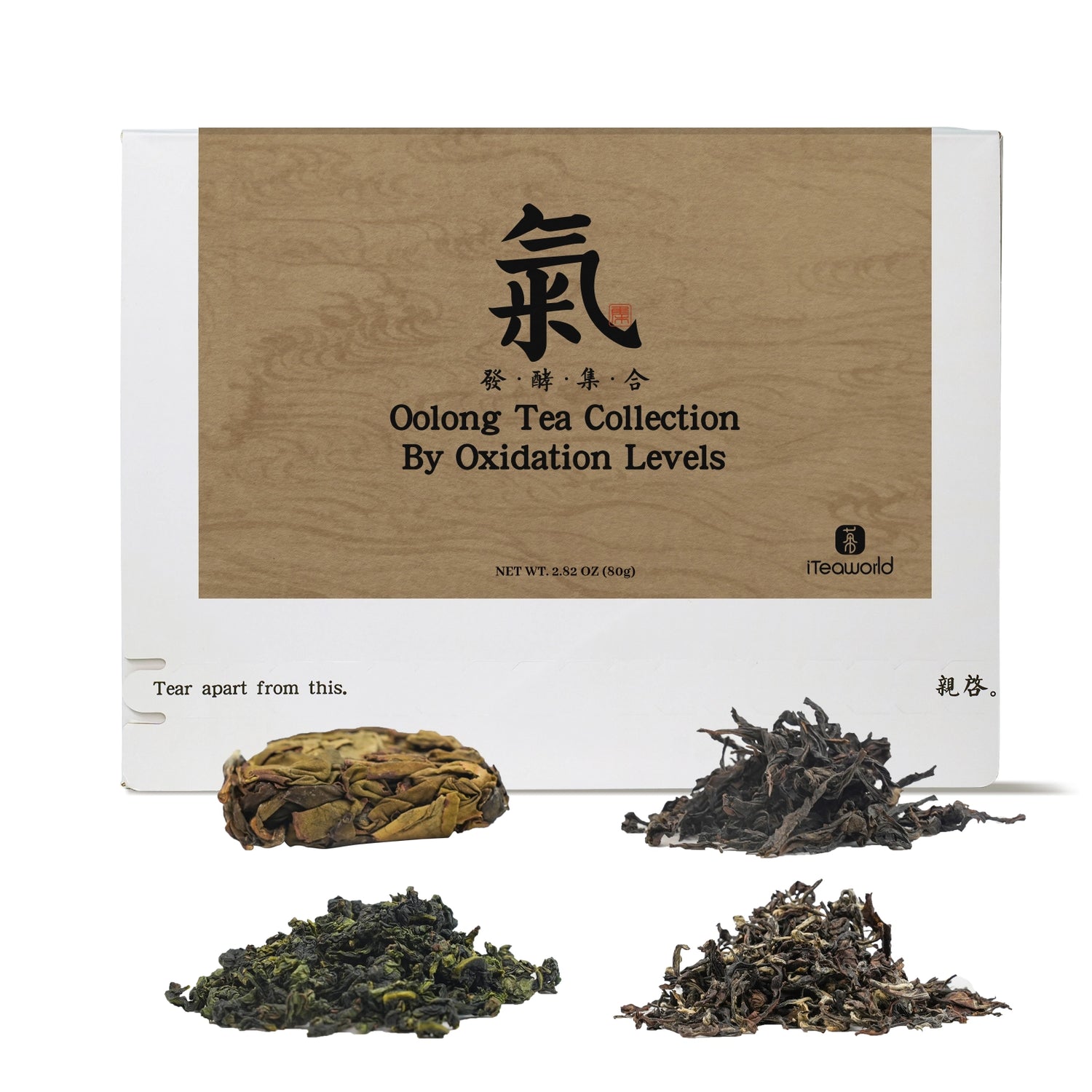
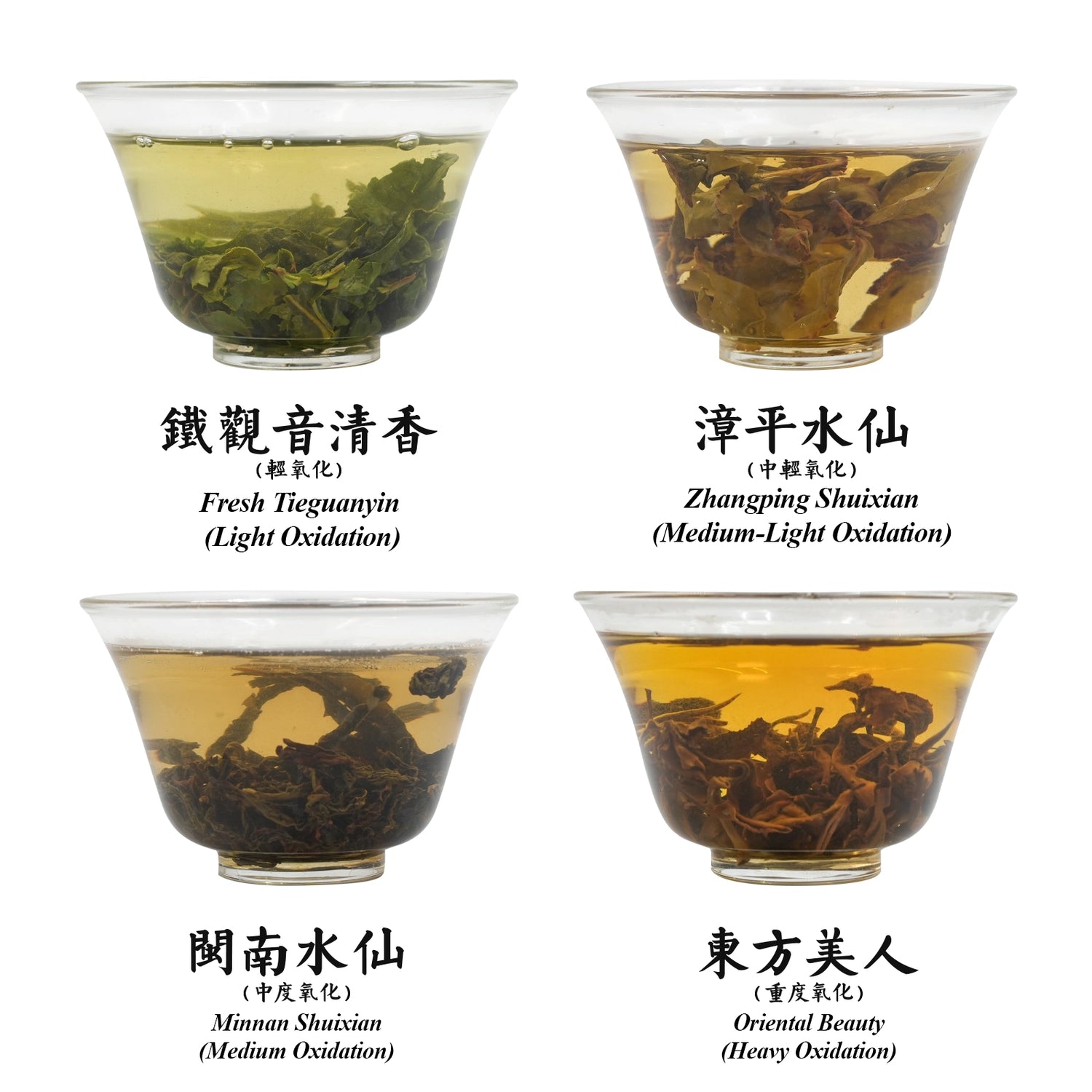
Oolong Tea Comparison Set: 4 Oxidation Levels (Tieguanyin to Oriental Beauty) 80g
Oolong Tea Comparison Set: 4 Oxidation Levels (Tieguanyin to Oriental Beauty) 80g
Oolong Tea: The Balance of Oxidation
Oolong tea is a partially oxidized tea, with oxidation levels ranging from 10% to 70%. Oxidation plays a key role in shaping the tea's aroma and the brightness of its flavor. Light oxidation creates fresh floral and fruity notes, while higher oxidation brings out richer, more mature fruit or honey-like aromas.
Lightly Oxidized Oolong (10%–25%): Examples like Wen Shan Baozhong and light-roast Tieguanyin showcase fresh floral and fruity scents.
Moderately Oxidized Oolong (25%–50%): Teas such as Phoenix Dan Cong and medium-roast Tieguanyin have a balanced profile, combining floral notes with hints of honey, fruit, or roasting, resulting in a complex aroma.
Heavily Oxidized Oolong (50%–70%): Classics like Da Hong Pao, Wuyi Rougui, and Oriental Beauty deliver mature fruit aromas, roasted or caramel-like notes, and a smooth, full-bodied brew.
This product includes four renowned oolong teas, all lightly roasted but with varying oxidation levels. It’s the perfect way to explore how different oxidation levels influence the flavor and aroma of oolong tea.
Products Included:
- Fresh Tieguanyin (Light Oxidation) 20g
- Zhangping Shuixian Oolong Tea (Medium-Light Oxidation) 20g
- Minnan Shuixian (Medium Oxidation) 20g
- Oriental Beauty (Heavy Oxidation) 20g
Origin:
- Fresh Tieguanyin: Longjuan Village, Longjuan Township, Anxi County, Fujian Province, China
- Zhangping Shuixian:Beiliao Village, Nanyang Town, Zhangping City, Fujian Province, China
- Minnan Shuixian:Wuxi Village, Wufeng Town, Yongchun County, Quanzhou City, Fujian Province, China
- Oriental Beauty:Neiyang Village, Pingshan Township, Sanming City, Fujian Province, China
Master Blender:
- Fresh Tieguanyin: Chen Qizhi
- Zhangping Shuixian:He Meiqing
- Minnan Shuixian:Xu Yongyuan
- Oriental Beauty:Li Jianmin
Processing Time:
- Fresh Tieguanyin: November 2024
- Zhangping Shuixian:June 2024
- Minnan Shuixian:December 2024
- Oriental Beauty:early June 2024
Best Before Date:24months
Tea Variety:
- Tieguanyin: Tieguanyin Varieties
- Zhangping Shui Xian: Minnan Shuixian Varieties
- Minnan Shuixian: Jianyang Shui Xian Varieties
- Oriental Beauty: Jin Xuan variety
Altitude:
- Tieguanyin: 800-900 meters
- Zhangping Shui Xian: 400-500 meters
- Minnan Shuixian:900-1000 meters
- Oriental Beauty:1100 meters
Soil Type:
- Tieguanyin: red soil
- Zhangping Shui Xian: yellow and red soil
- Minnan Shuixian: red soil
- Oriental Beauty:Red soil
Oxidation Level:
- Tieguanyin: Light oxidation (10-20%)
- Zhangping Shui Xian: Mild-light oxidation (25-30%)
- Minnan Shuixian: Medium oxidation (40-50%)
- Oriental Beauty:Heavy oxidation (60-70%)
Roasting Level:
- Very light roast, 70-80°C (158-176°F)
Roasting Method (Charcoal or Electric):
- electric roasting
Brewing Recommendations:
Chinese-Style Oolong Brewing
Teaware: Gaiwan or clay teapot
Water Temp: 212°F (100°C)
Tea-to-Water Ratio: 1g per 0.7 oz (20ml)
Steep Time: 10-15 sec (1-3 steeps), add 5-10 sec after
Re-Steep: Up to 7 times
Western-Style Oolong Brewing
Teaware: Teapot, infuser, or French press
Water Temp: 90-100°C (194-212°F)
Tea-to-Water Ratio: 1 tsp (2-3g) per 8 oz (240ml)
Steep Time: 3-5 minutes
Re-Steep: Up to 3 times, adding 1-2 minutes each time
Should You Really Buy High-Altitude Tea? This Product Might Help You Decide
High-altitude tea is grown in regions with big temperature differences between day and night, cooler temperatures, and frequent cloud cover. These conditions slow down the tea’s growth, keeping the leaves tender and rich in amino acids. This results in teas that are naturally sweeter, fresher, and more aromatic. High-altitude teas are perfect for light to medium oxidation and roasting levels. Examples of high-altitude oolongs include Taiwan High Mountain Tea and Phoenix Dan Cong.
Low-altitude teas, on the other hand, generally have higher levels of tea polyphenols, but tend to have a weaker aroma and lower endurance for multiple infusions.
This product features three Duck Shit Oolong teas, all crafted by the same tea master in Fenghuang Town with similar oxidation and roasting levels. The only difference is the altitude where they were grown, making it easy to compare how altitude affects the tea's flavor.
Products Included:
- Ya Shi Xiang (Duck Shit) Dan Cong Oolong (Low-Mountain) 20g
- Ya Shi Xiang (Duck Shit) Dan Cong Oolong (Medium-Mountain) 20g
- Ya Shi Xiang (Duck Shit) Dan Cong Oolong (High-Mountain) 20g
Origin:
- Lower Hill:Hutou Village, Fenghuang Town, Chaozhou City, Guangdong Province, China
- Middle Mountain:Fengxi Reservoir, Fenghuang Town, Chaozhou City, Guangdong Province, China
- High Mountain:Dongjiao Village,Fenghuang Town,Chaoan District,Chaozhou City,Guangdong Province,China
Master Blender:Lin zhiqiang
Processing Time:June 2023
Best Before Date:36 months
Tea Variety:Ya Shi Xiang variety
Altitude:
- Low-Mountain:300-400 meters
- Medium-Mountain:600 meters
- High-Mountain:800-900 meters
Soil Type: yellow soil
Oxidation Level:30-40%
Roasting Level:
- Low-Mountain:Two roasts, medium-light fire (95-105°C / 203-221°F)
1st roast: June-July 2023,2nd roast: After Mid-Autumn Festival 2023 - Medium-Mountain:Two roasts, medium-light fire (95-105°C / 203-221°F)
- High-Mountain: Three roasts, medium-light fire (95-105°C / 203-221°F),1st roast: June-July 2022,2nd roast: After Mid-Autumn Festival 2022,3rd roast: After Chinese New Year 2023
Roasting Method (Charcoal or Electric):charcoal briquetting
Brewing Recommendations:
Chinese-Style Oolong Brewing
Teaware: Gaiwan or clay teapot
Water Temp: 212°F (100°C)
Tea-to-Water Ratio: 1g per 0.7 oz (20ml)
Steep Time: 10-15 sec (1-3 steeps), add 5-10 sec after
Re-Steep: Up to 7 times
Western-Style Oolong Brewing
Teaware: Teapot, infuser, or French press
Water Temp: 190-200°F (88-93°C)
Tea-to-Water Ratio: 1 tsp (2-3g) per 8 oz (240ml)
Steep Time: 3-5 minutes
Re-Steep: Up to 3 times, adding 1-2 minutes each time
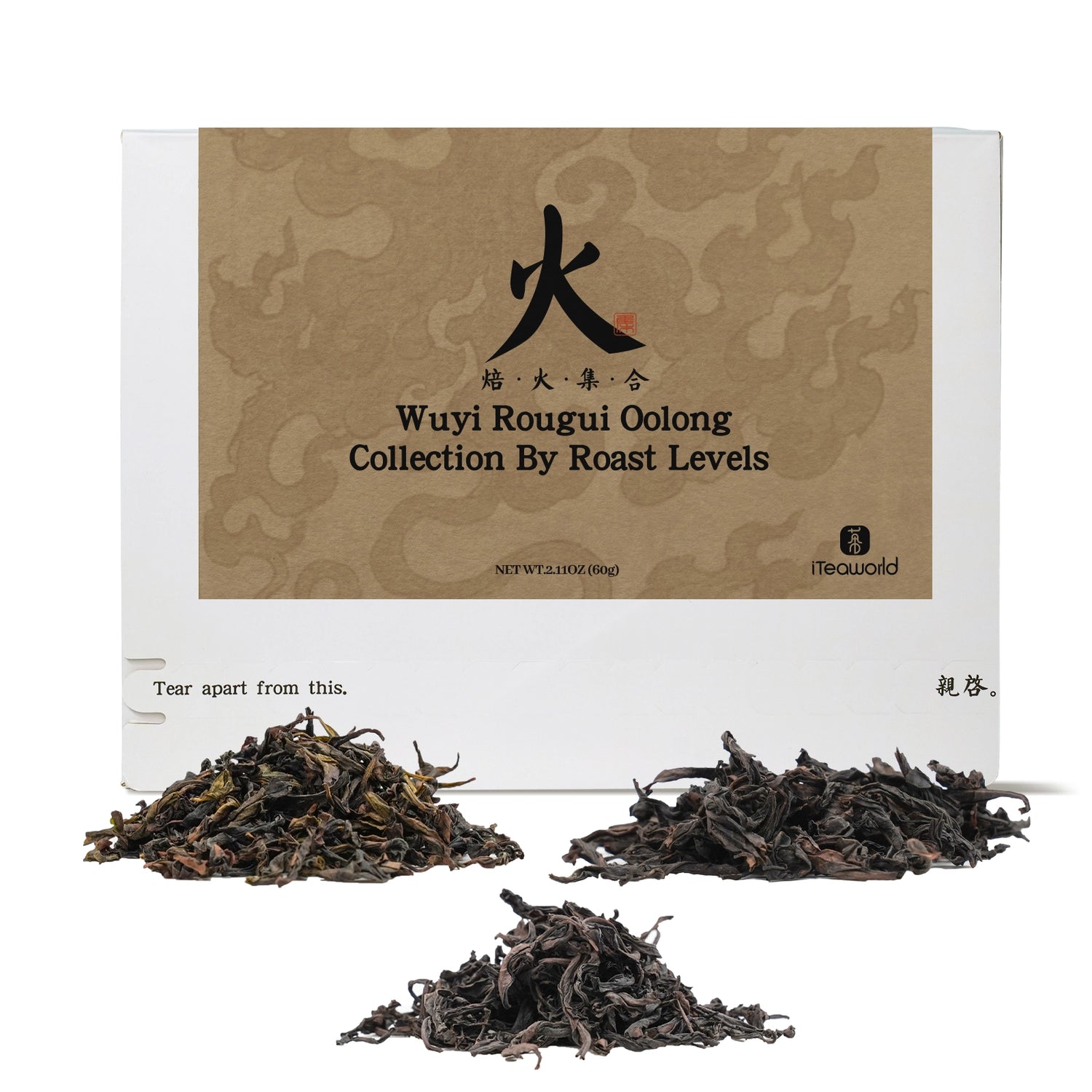
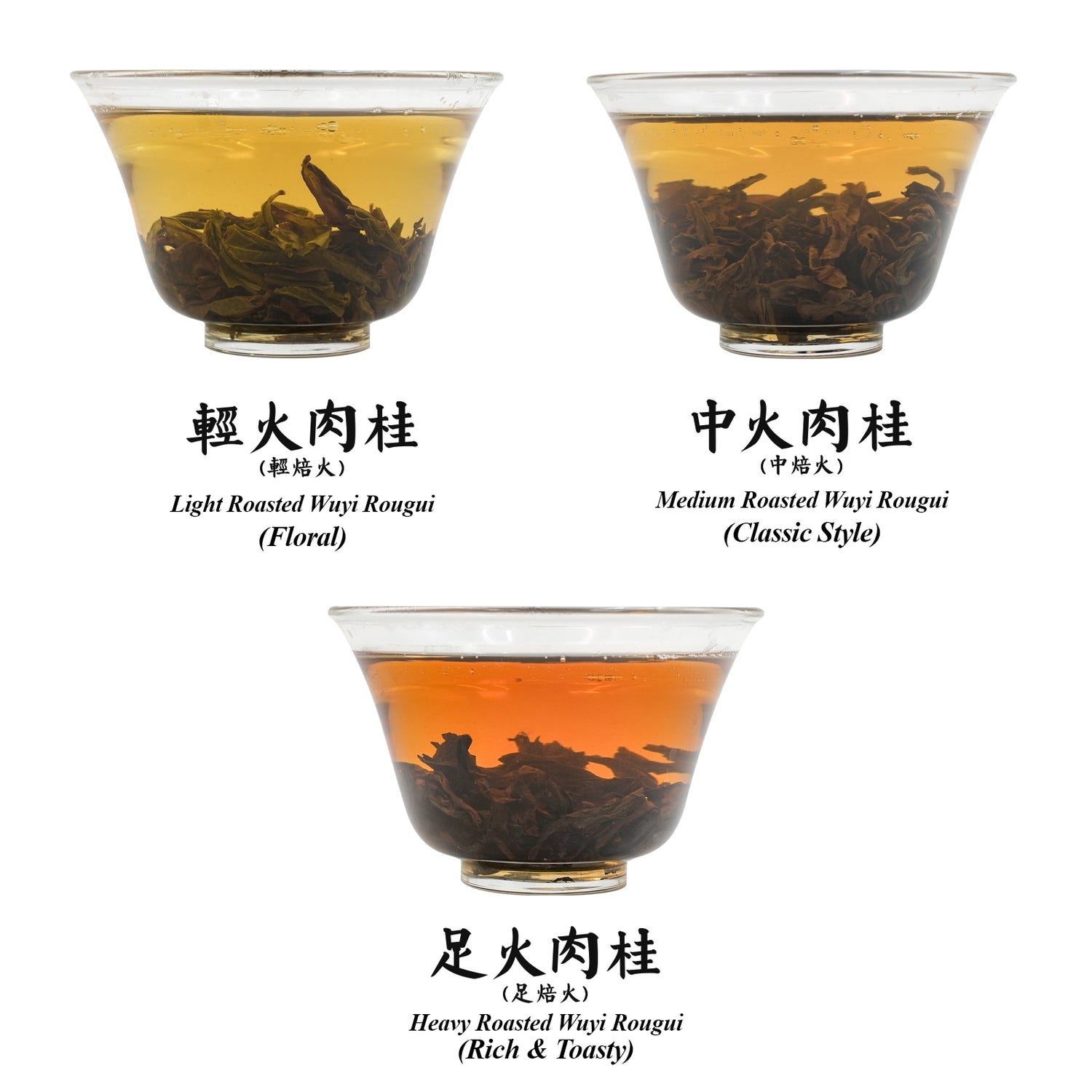
Wuyi Oolong Comparison Set: 3 Roast Levels (Light to Heavy Fire) 60g
Wuyi Oolong Comparison Set: 3 Roast Levels (Light to Heavy Fire) 60g
The Art of Roasting Oolong Tea
Roasting oolong tea serves three key purposes: reducing moisture, removing any off-flavors, and lowering caffeine content, all while enhancing the tea's aroma and flavor.Teas with different oxidation levels need different roasting levels. Usually, lightly oxidized teas are lightly roasted to enhance their flavor. If a tea is lightly oxidized but heavily roasted, it can taste too smoky, often because the oxidation wasn’t done properly and the roasting is used to cover it up.
The level of roasting significantly impacts the tea’s aroma and taste. Light roasting preserves the fresh, floral fragrance, while heavy roasting creates a richer, smoother brew with toasty or smoky undertones.
This tea features Wuyi Rougui oolong from the renowned Wuyi Mountains in Fujian, crafted by the same tea master. The only difference lies in the roasting level, offering you an excellent opportunity to explore how roasting shapes the flavors of oolong tea.
Origin:Jingshui Village, Xingcun Town, Wuyishan City, Fujian Province, China
Master Blender:Chen Hui
Processing Time:November 2024
Best Before Date:24 months
Tea Variety:Wuyi Cinnamon
Altitude:about 400 meters
Soil Type:gravelly soil
Oxidation Level:Oxidization 45-55%
Roasting Level:Single Roast: Light roast, 90-100°C (194-212°F)
Triple Roast: Medium roast, 105-115°C (221-239°F)
Triple Roast (Full Fire): Heavy roast, 120-130°C (248-266°F)
Roasting Method (Charcoal or Electric):
Light cinnamon: electric roasting 20g
Medium fire cinnamon: charcoal briquetting 20g
Full Flame Cinnamon: charcoal briquetting 20g
Brewing Recommendations:
Chinese-Style Oolong Brewing
Teaware: Gaiwan or clay teapot
Water Temp: 212°F (100°C)
Tea-to-Water Ratio: 1g per 0.7 oz (20ml)
Steep Time: 10-15 sec (1-3 steeps), add 5-10 sec after
Re-Steep: Up to 7 times
Western-Style Oolong Brewing
Teaware: Teapot, infuser, or French press
Water Temp: 190-200°F (88-93°C)
Tea-to-Water Ratio: 1 tsp (2-3g) per 8 oz (240ml)
Steep Time: 3-5 minutes
Re-Steep: Up to 3 times, adding 1-2 minutes each time
Why this product?
Many people are unclear about what qualifies as aged tea and how to tell the age of tea. iTeaworld has been working with aged tea in the Chinese market for 20 years. We believe that for tea to be considered "aged," it should meet these three criteria: 1. It should have an aged or woody aroma. 2. The tea liquor should be smooth, rich, and sweet. 3. There should be a noticeable warm sensation in the body, especially in the hands and feet, after drinking.
Based on this standard, we’ve selected 10 aged teas, including Oolong, black tea, white tea, dark tea, Pu-erh, and green tea, to help tea lovers understand what aged tea really is.
The product includes:
1995 Shui Xian Oolong Tea: 2 packs of 5g each
1998 Tie Guan Yin Oolong Tea: 2 packs of 5g each
1995 Fenghuang Dancong Oolong Tea: 2 packs of 5g each
1998 Raw Pu-erh Tea : 2 packs of 5g each
2003 Ripe Pu-erh Tea : 2 packs of 5g each
2008 Shuangzheng Liu Bao Dark Tea: 2 packs of 5g each
2014 Shou Mei White Tea: 2 packs of 5g each
2014 Lapsang Souchong Black Tea: 2 packs of 5g each
1998 Jasmine Green Tea: 2 packs of 5g each
1980s Aged Fu Brick Dark Tea: 2 packs of 5g each
How to brew:
Brewing utensils: White porcelain Gaiwan or Zisha teapot.
Water temperature: 95°C-100°C
Tea-to-water ratio: 1:15-25
Brewing time: 10-20seconds
Number of brews: 5-7 times
Why Aged Tea is Still Drinkable:
The reason aged tea can still be consumed safely lies in the unique chemistry of tea leaves and traditional storage methods. Tea contains powerful antioxidants like catechins and polyphenols, which naturally help slow oxidation, keeping tea consumable for extended periods. Dried tea absorbs only minimal moisture and oxygen, meaning it doesn’t provide the damp environment that bacteria need to grow. As long as tea is stored properly—dry, cool, and sealed against odors—it won’t spoil easily, and you can enjoy it without worries if there’s no mold or strange smells.
How Different Types of Tea Age:
Dark Tea (Hei Cha)
Dark tea, when properly aged, undergoes microbial transformations that mellow its flavor. Over time, compounds like caffeine and polyphenols break down, shifting the taste from bitter to smooth and rich. Dark tea requires specific storage conditions: dry, airy, and cool, to support this mellowing process.
White Tea
In China, there’s a saying about white tea: "One-year tea, three-year medicine, seven-year treasure." Aging for three years or more brings out richer flavors and enhances its perceived medicinal value. As white tea ages, the leaves soften in flavor and aroma, creating a more layered drinking experience.
Black Tea
Black tea generally maintains its natural sweetness and fragrance over time, and since its flavor doesn’t improve with aging, most black teas are best enjoyed fresh. However, certain types of compressed black teas, like Hunan's Fu Brick, can develop deeper flavors with storage due to gradual microbial changes.
Oolong Tea
Roasted Oolong teas like Wuyi Rock Tea (Yan Cha) gain complexity as they age. The roasted notes soften, and the tea develops a distinctive “aged aroma,” adding richness and hints of sweetness. Proper storage is essential to preserve its unique characteristics: keep it dry, away from direct sunlight, and sealed to maintain freshness.
Jasmine Green Tea
Jasmine Green Tea, infused with fresh jasmine flowers, has a unique floral aroma that is best enjoyed within one or two years. Over time, the green tea component oxidizes, leading to a darker color and a softer floral note. To preserve the jasmine aroma and freshness, it’s ideal to store it sealed, in a cool, dry place, or even refrigerate it if possible.
Our Six-Tea Collection invites you to explore the rich traditions of China’s six major tea types, each represented by a world-famous classic: Biluochun (Green Tea), Junshan Yinzhen (Yellow Tea), Bai Mudan (White Tea), Fenghuang Dancong (Oolong Tea), Shu Puer (Dark Tea), and Dianhong (Black Tea). Each tea is carefully sourced from its original growing region, handcrafted by tea masters with over 20 years of experience, and graded premium or higher to ensure outstanding quality.
From the floral freshness of Biluochun to the natural sweetness of Bai Mudan, the aromatic complexity of Fenghuang Dancong, and the smooth, earthy richness of Shu Puer, this collection showcases the diverse flavors and traditions of Chinese tea. Whether you’re a tea enthusiast or just curious about tea culture, this set offers an unforgettable tasting experience and makes a thoughtful gift steeped in history and craftsmanship.
What's Inside?
-
Biluochun (Green Tea)
- Origin: Suzhou, Jiangsu
- Grade: High-grade, one bud and one leaf
- Renowned for its tender, spiraling leaves and refreshing, floral aroma, Biluochun is a green tea lover’s favorite. Handpicked from lush gardens, it embodies the spring’s vitality.
-
Junshan Yinzhen (Yellow Tea)
- Origin: Dongting Lake, Hunan
- Grade: Top-quality, golden buds
- Rare and precious, this yellow tea dazzles with its unique honeyed aroma and silky smooth flavor. It's a sophisticated treasure for discerning palates.
-
Bai Mudan (White Tea)
- Origin: Fuding, Fujian
- Grade: Superior, one bud and one leaf
- With delicate floral and fruity notes, Bai Mudan offers a mellow yet rich flavor, showcasing the elegance of minimally processed white tea.
-
Fenghuang Dancong (Oolong Tea)
- Origin: Chaozhou, Guangdong
- Grade: Premium-grade from Phoenix Mountain
- Known as “Phoenix Single Bush,” this oolong captivates with its naturally sweet, fruity, and aromatic complexity. A true connoisseur’s delight.
-
Shu Puer (Dark Tea)
- Origin: Yunnan
- Grade: Aged and expertly fermented
- With earthy, rich notes, Shu Puer offers a grounding and soothing tea experience. Perfect for those who enjoy deep, bold flavors.
-
Dianhong (Black Tea)
- Origin: Fengqing, Yunnan
- Grade: Made by a historic tea factory with over 70 years of expertise
- Bold and robust, Dianhong showcases a natural sweetness and malty depth. Its golden tips reflect its premium quality and craftsmanship.
Jasmine tea is made by blending finished base teas with fresh jasmine blossoms, allowing the dry tea leaves to absorb the floral aroma. The resulting tea is known as jasmine tea.
Our Jasmine Green Tea Sampler features four types of Chinese green teas as the base, each scented with jasmine flowers through different numbers of scenting sessions—3, 5, 7, and 9 times. These teas represent a variety of classic green tea shapes in China:
- Curled (Biluochun)
- Tightly rolled with visible silvery buds (Mao jian)
- Needle-shaped (Zhen wang)
- Covered in fine white hairs (Bai hao)
Each variety offers a unique green tea taste. With increasing scenting sessions, the jasmine aroma becomes progressively more intense, allowing you to experience the true artistry of traditional Chinese flower-scented tea.
Explore the World of Chinese Oolong Tea with Four Iconic Varieties
Discover the rich diversity of Chinese Oolong tea with this curated sampler featuring Da Hong Pao, Tie Guan Yin, Phoenix Dan Cong, and Zhangping Shui Xian. From lightly oxidized teas to deeply roasted rock teas, this set is a perfect introduction for tea lovers who want to explore the full spectrum of oolong flavors.
- Da Hong Pao: Bold and toasty, from Wuyi Mountains
- Tie Guan Yin: Light, floral, and elegant — a classic minnan oolong tea
- Fenghuang Dan Cong: Naturally fruity with rich orchid aroma
- Zhangping Shui Xian: Rare pressed oolong with subtle garden notes
Whether you're new to oolong or seeking variety, this set offers a sensory journey across China’s top tea regions, all in one elegant collection.
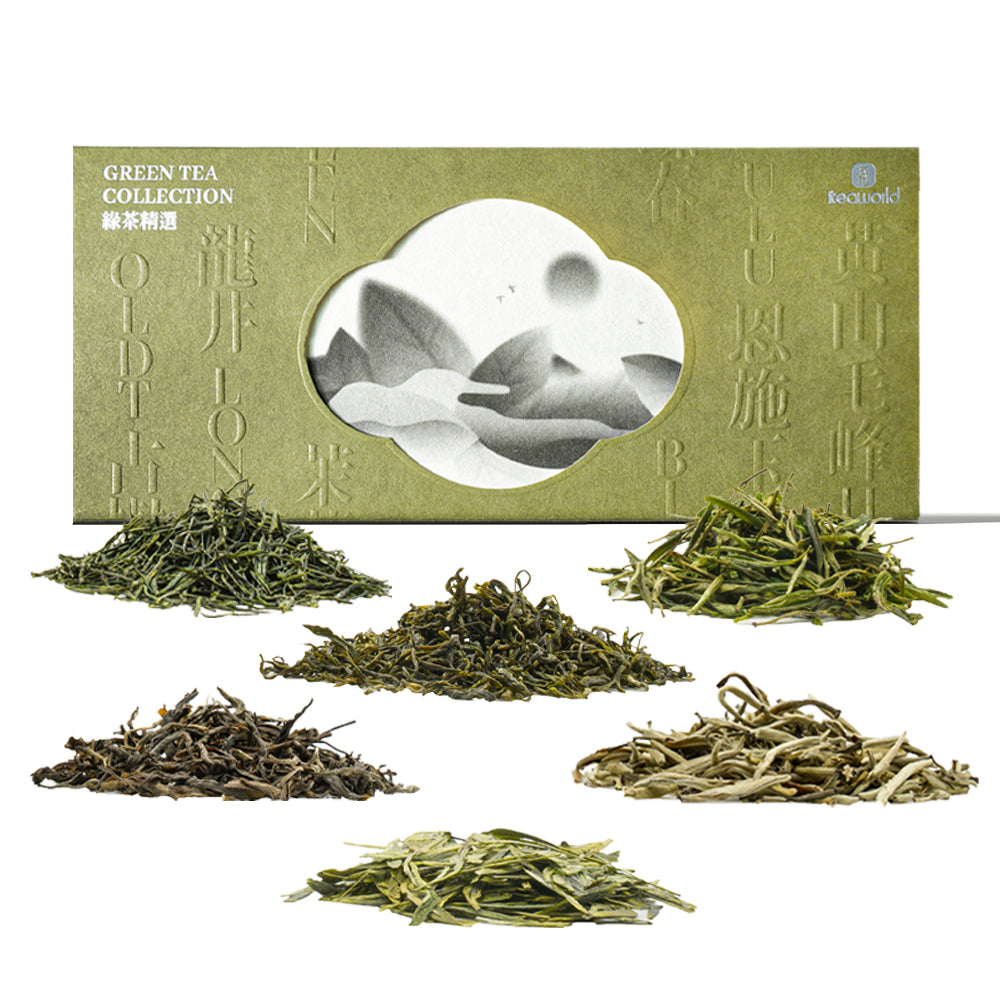
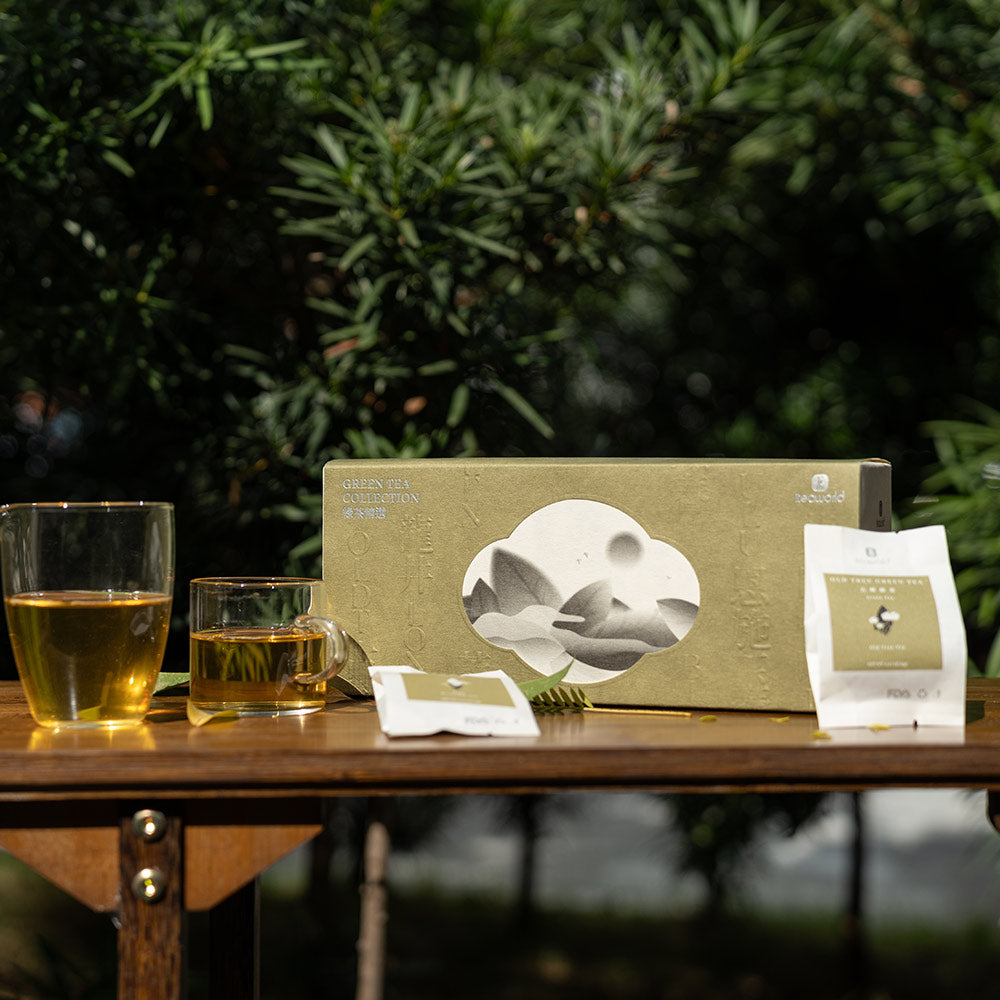
Chinese Green Tea Collection – 6 Premium Teas for Tea Lovers 100g
Chinese Green Tea Collection – 6 Premium Teas for Tea Lovers 100g
Sip Serenity: Six Exceptional Green Teas, Each a Poetic Journey. From Enshi to Huangshan, a tribute to tea farmers. Close your eyes, and feel nature's embrace. Featuring Enshi Jade Dew, Dragonwell, Biluochun, Jasmine Green Tea, Ancient Tree Green Tea, and Huangshan Maofeng. Experience Chinese green tea's essence, a cleansing calm like riverside willows in spring. Embrace serenity, and savor leisure with every cup.
Savor the Essence of Iced Tea with iTeaworld's Loose Leaf Cold Brew Tea Sampler.
It includes Jasmine Green Tea, Jasmine Black Tea, Rose Black Tea, and Mi Lan Xiang Dancong Oolong Tea.
The Oolong Tea Sampler comprises four renowned loose-leaf Oolong teas from China: Tie Guan Yin, Minnan Narcissus, Da Hong Pao, and Feng Huang Dan Cong. It provides a comprehensive opportunity to appreciate the disparities among Oolong teas, from their refreshing, floral, honeyed, to fruity aromas. Moreover, you'll delve into the variations in taste brought about by differences in fermentation levels and roasting intensities. Additionally, you'll explore the unique flavors derived from both modern high-mountain tea gardens and ancient tree plantations. This sampler simplifies the process of identifying your preferred Oolong tea variety.
Net weight: 80g total, 5g per pack. More tea, same price.
Each pack is perfect for both Gongfu-style and Western-style brewing—just the right amount for one brew.
Net weight: 80g total, 5g per pack. More tea, same price.
Each pack is perfect for both Gongfu-style and Western-style brewing—just the right amount for one brew.
Uncover the treasures of Chinese tea culture with our Classic Tea Sampler, showcasing eight iconic Chinese teas - four oolongs and four blacks. The collection promises a captivating sensory experience, allowing you to explore the complexities of aroma, fermentation levels, and the origins of the different tea gardens - all conveniently packaged in one box. Immerse yourself in a world of aromas, from the clarity of clear, the elegance of floral notes, and the sweetness of honey, to the rich, fruity flavors of oolong tea. For black teas, you can enjoy floral, honey, sweet, and smoky flavors. Our carefully selected teas include low, medium, and high oxidation levels from modern high-mountains tea gardens, abandoned tea gardens, old tree tea gardens, and wild tea trees.
Introduction:
This Da Hong Pao tea is carefully selected from the autumn harvest of 2024. The exceptional growing conditions impart a rich, robust flavor and complex layers of taste. The plucking standard of one bud and two leaves ensures a full-bodied, sweet aftertaste, with a pronounced fruity aroma and a distinct "rock essence" (Yan Yun).
Reasons to Recommend:
- Rich History: With over 700 years of history, Da Hong Pao is regarded as the premier tea among scholars and literati.
- Core Production Area: Grown in the heart of Wuyi Mountain, Fujian, where the average annual temperature ranges from 16°C to 25°C, the frost-free period lasts 253-272 days, and annual rainfall is around 2000 mm. The acidic red soil, rich in organic matter and minerals, contributes to the unique flavor profile of Da Hong Pao tea trees.
- High-Altitude Tea Gardens: This tea is cultivated in high-altitude gardens in Wuyi Mountain, where the superior climate enhances the tea's richness, delivering a fuller, sweeter aftertaste and a more intense, lingering aroma with a pronounced "rock essence."
- Unique Roasting Process: Premium tea leaves are slowly roasted under gentle heat, developing a sweet fragrance with a subtle smoky undertone.
Oxidation Level: 50%-60%
Roasting Level: Full roast
Tea Garden Soil: Yellow soil
Processing Time: Autumn 2024
Best Before Date: 36 months
Tea Variety: Da Hong Pao Blend
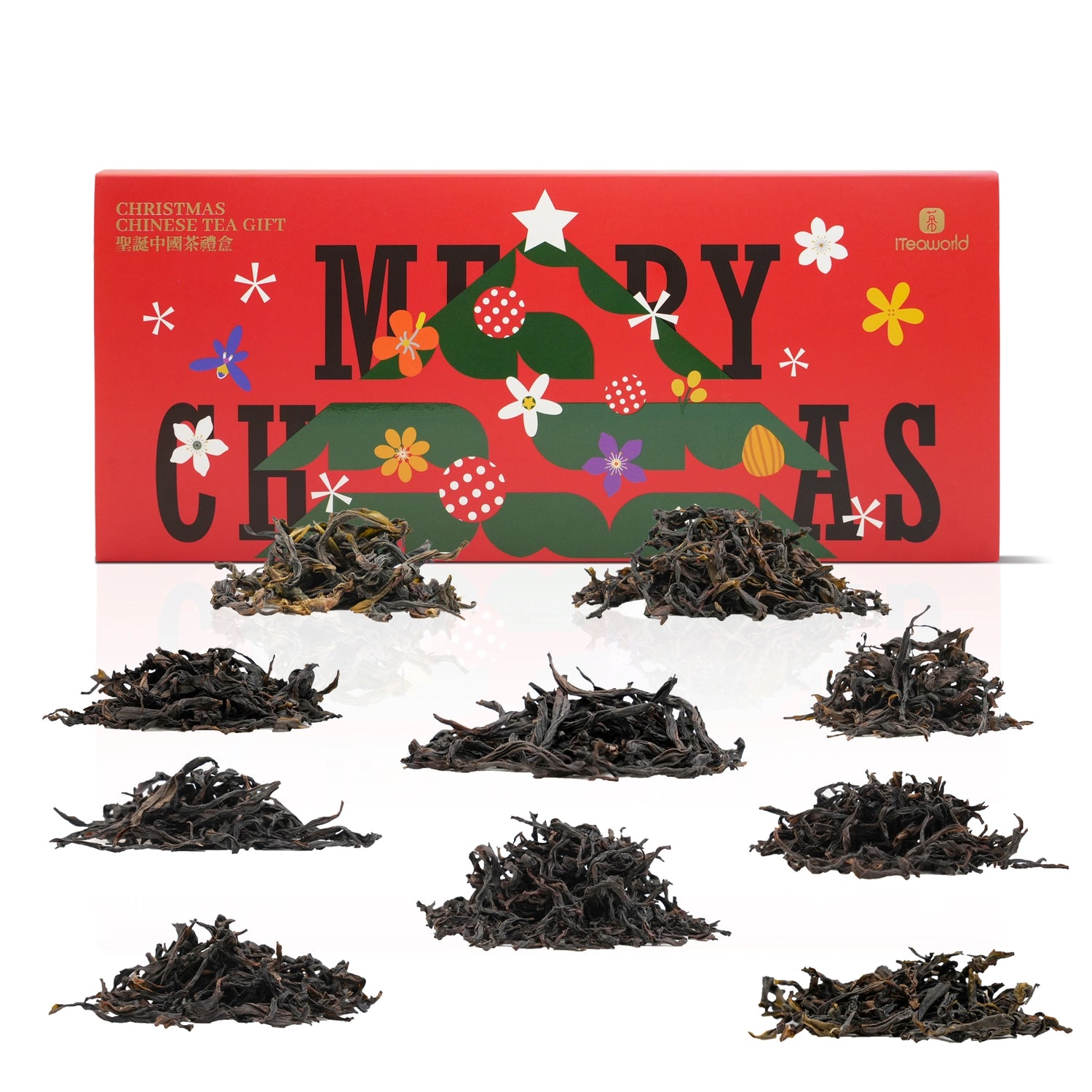
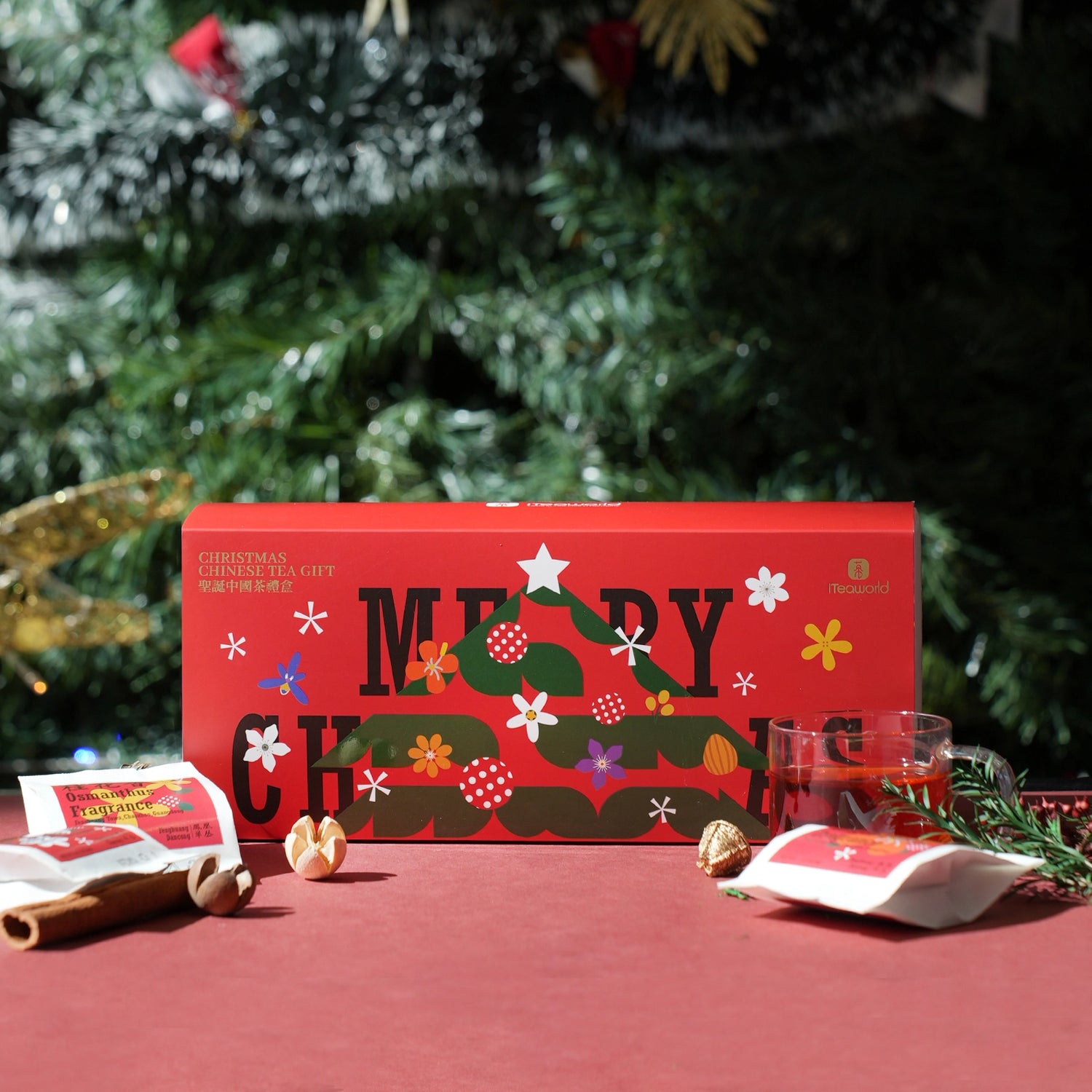
Christmas Gift Box - 10 Distinct Aromas of Fenghuang Dancong Oolong Tea 100g
Christmas Gift Box - 10 Distinct Aromas of Fenghuang Dancong Oolong Tea 100g
Fenghuang Dancong 10 Aromas Collection – A Perfect Holiday Tea Gift
Discover the essence of Chinese Gongfu tea culture with this unique Fenghuang Dancong oolong tea set, featuring 10 distinct natural aromas like Jasmine, Gardenia, Honey Orchid, and more. Known as the "perfume of tea," this collection showcases the diverse flavors created by different tea bush varieties from Fenghuang Town, the heart of Dancong tea production.
Whether you’re a fan of fragrant teas, a Gongfu tea enthusiast, or simply curious about the rich aromas and flavors of oolong tea, this set offers a sensory journey you won’t forget. Beautifully curated, it’s an ideal gift for tea lovers who appreciate authentic, aromatic, and high-quality teas.
What is Fenghuang Dancong tea?
Fenghuang Dancong tea is a type of oolong tea, which is selected and bred from the Fenghuang Shuixian group. Each individual plant has its own unique shape and variety, forming its own product line, hence the name "Dancong," which means "single bush" or "single strain." This tea is mainly characterized by its ability to withstand multiple infusions, its strong aftertaste, and its high, lingering aroma. It's known as the most fragrant oolong tea due to its distinctive fragrance. Based on different aromatic types, Fenghuang Dancong is divided into various scented categories.
The product includes:
Fenghuang Dancong Oolong Tea(Huang Zhi Fragrance)2*5g
Fenghuang Dancong Oolong Tea(Orchid Fragrance)2*5g
Fenghuang Dancong Oolong Tea(Honey Orchid Fragrance)2*5g
Fenghuang Dancong Oolong Tea(Magnolia Fragrance)2*5g
Fenghuang Dancong Oolong Tea(Ginger Flower Fragrance)2*5g
Fenghuang Dancong Oolong Tea(Osmanthus Aroma)2*5g
Fenghuang Dancong Oolong Tea(Cinnamon Fragrance)2*5g
Fenghuang Dancong Oolong Tea(Almond Fragrance)2*5g
Fenghuang Dancong Oolong Tea(Night-scented Stock)2*5g
Fenghuang Dancong Oolong Tea(Jasmine Fragrance)2*5g
Origin:
Fenghuang Town, Chaozhou City, Guangdong Province.
Introduction to the Top 10 Fragrance Types of Fenghuang Dancong Tea
Fenghuang Dancong(Huang Zhi Fragrance):A high-quality single bush tea with a natural gardenia fragrance.
Fenghuang Dancong (Orchid Fragrance):Features the aroma of orchids, fresh and subtle.
Fenghuang Dancong (Honey Orchid Fragrance):The most popular type, known for its strong honey flavor combined with orchid fragrance, hence the name Milan.
Fenghuang Dancong(Magnolia Fragrance): Fresh and elegant, with the aroma of magnolia flowers.
Fenghuang Dancong(Ginger Flower Fragrance):Also known as 'Penetrating Heaven Fragrance', named for the uplifting ginger flower scent when the tea is brewed.
Fenghuang Dancong (Osmanthus aroma): Reminiscent of osmanthus flowers, sweet and lingering.
Fenghuang Dancong (Cinnamon Fragrance): Named for the tea's flavor that resembles the taste of cinnamon, a traditional Chinese medicine.
Fenghuang Dancong (Almond Fragrance):Also known as 'Sawtooth', named for the serrated edges of the leaves, with a distinct almond aroma.
Fenghuang Dancong (Night-scented Stock): Night-scented Stock Dancong is famous for its unique evening fragrance and flavor. It's mainly produced in Fengxi Dan Lake, Fenghuang Town, and is quite rare.
Fenghuang Dancong (Jasmine Fragrance): A unique fragrance type with the scent of jasmine flowers, refreshing and delightful.
Brewing Tips
Recommended Method: Traditional Gongfu style.
Best Teaware: White porcelain gaiwan or Yixing clay teapot.
Tea-to-Water Ratio: Use 5g of tea for 100ml of water.
Water Temperature: 212℉ (100℃).
Steeping Times:
First rinse: Quick pour, discard the rinse.
2nd–5th infusions: Steep for 6–8 seconds.
6th–10th infusions: Steep for 10–15 seconds.
Brewing Durability: Authentic Dancong from Chaozhou's Fenghuang region can be steeped 12–15 times.
Technique: Pour water along the edge of the gaiwan in a steady stream. Tilt the lid slightly to leave a small gap to prevent over-steaming.
2025 First Flush Spring Tea Collection: Biluochun, Longjing & More
We’re excited to introduce a unique tea experience: the 2025 Early Spring First Harvest Green Tea Collection. This special gift box includes four of China’s most loved and iconic first harvest green teas, giving you the chance to enjoy the different flavors of Longjing, Biluochun, Huangshan Maofeng, and Enshi Yulu all in one go.
Product Includes:
2025 First Flush Longjing - Artisan-Crafted Spring Green Tea (25g)
2025 First Flush Biluochun - Hand-Rolled Curly Green Tea (25g)
2025 First Flush Huangshan Maofeng - High-Mountain Bud Tea (25g)
2025 First Flush Enshi Yulu - Steamed Jade Dew Tea (25g)
Limited availability: Only 100 sets, each set is 100g (25g of each tea)
Why Choose This Collection?
Taste Four Classic First Harvest Teas in One Box Whether you’re a green tea enthusiast or someone wanting to dive into Chinese tea culture, this collection is the perfect choice. From Longjing’s refreshing taste, Biluochun’s floral fragrance, Huangshan Maofeng’s rich aftertaste, to Enshi Yulu’s clean and pure flavor – each tea offers a completely different tasting experience, making it a journey for your taste buds.
First Harvest Means Better Quality Each tea in this collection comes from the 2025 Early Spring First Harvest – handpicked from the youngest, freshest buds of the season, guaranteeing vibrant freshness and rich aromas. First harvest teas are especially rare and prized; once the season passes, it’s almost impossible to find them again.
Sourced from Top Tea Regions, Expertly Crafted These teas are from China’s most renowned tea-growing regions, carefully crafted by seasoned tea masters. Whether it’s the signature fragrance of Longjing, the floral notes of Biluochun, the sweetness of Huangshan Maofeng, or the refreshing taste of Enshi Yulu – each tea is a masterpiece from a tea master, grown in ideal natural conditions.
You may have tried various green teas, like Longjing, Zhucha, and Jasmine tea, but you're looking to explore more high-quality, reasonably priced Chinese teas. To ensure value, we've carefully selected premium teas from China's top ten famous varieties, following these key principles:
Collaborating with experienced tea masters to ensure traditional and skilled craftsmanship.
Choosing high-grade leaves—one bud and one or two leaves—while hand-picking out stems and dust to ensure purity.
Sourcing directly from tea farmers to maintain freshness and quality, cutting out the middleman.
Ensuring our selections are fresh spring teas from 2024 to capture vibrant flavors and aromas.
Picking high-quality leaves from authentic tea varietals to guarantee unique taste.
Balancing quality with affordability to meet consumer needs.
Sourcing from core production areas or nearby regions to ensure consistency in terroir.
Avoiding lower-grade flatland teas, focusing on those grown at altitudes above 600 meters to enhance flavor complexity.
Net weight: 90g, including:
Premium Biluochun: 15g
Premium Enshi Yulu: 15g
Premium Xinyang Maojian: 15g
Premium Lu'an Guapian: 15g
Premium Taiping Houkui: 15g
Premium Huangshan Maofeng: 15g
Here’s a brief overview of each tea:
Huangshan Maofeng: This tea is sourced from a renowned high mountain region, featuring tea trees over 60 years old grown in gravelly soil at 800 meters elevation. Recognized as a national intangible cultural heritage, Huangshan Maofeng boasts a distinctive aroma with floral and sweet notes, producing a clear, bright green-yellow tea that offers a pure high mountain experience.
Liu'an Guapian: This historic royal tribute tea was once reserved for the imperial family. Our premium Liu'an Guapian is hand-crafted by a master with decades of experience, sourced from high-altitude tea plants at 600 meters. The spring-harvested leaves ensure a rich fragrance and refreshing flavor, resulting in a pure, lingering aftertaste.
Taiping Houkui is a famous green tea from the Taiping area of Huangshan, Anhui Province, China. It comes from the core production region—Qiaoshan Village in Xinming Township—known for its cool, humid climate and fertile soil, perfect for growing tea. Our premium Taiping Houkui is made from one bud and three leaves, usually harvested around the Grain Rain season, with fine white fuzz on the leaves indicating top quality. The tea is grown from the traditional seed-propagated ‘Shi Da Shu’ variety, which matures later than usual. Due to the high altitude in Huangshan, the first harvest also takes place around Grain Rain. We work with Master Yu Jianguo, a tea farmer with over 20 years of experience, to produce this tea, which has a fresh flavor and aroma.
Biluochun: As one of the most iconic green teas in China, Biluochun is renowned for its unique floral and fruity aroma. Our premium Biluochun is sourced from Liyang, Jiangsu Province, crafted using traditional methods, and picked at the pre-rain period, ensuring a fresh, delicate flavor with minimal bitterness. This high-quality tea offers excellent value, priced at half to a third of similar products from core regions.
Xinyang Maojian: A top Chinese green tea, Xinyang Maojian comes from the core production area in Shihe District, Xinyang, located in high-altitude mountains at 900 meters. The significant temperature difference between day and night creates a unique elegant aroma and a fresh, flavorful taste. Our 2024 spring harvest features the highest quality leaves, with fine white hairs indicating superior quality.
Enshi Yulu: This historic steamed green tea is the only one in China that retains this traditional crafting method. Our Enshi Yulu comes from the core area in Enshi, Hubei, handpicked and crafted by a tea farmer with over 20 years of experience. Using high-grade leaves, this tea is fresh, rich, and slightly reminiscent of seaweed, while also being rich in natural selenium, known for its immune-boosting and antioxidant properties.
Recently viewed products
Chat with fellow tea lovers, ask questions, and share your tea moments.





